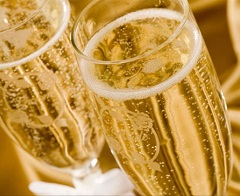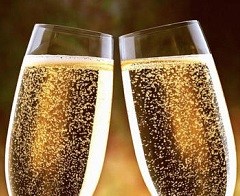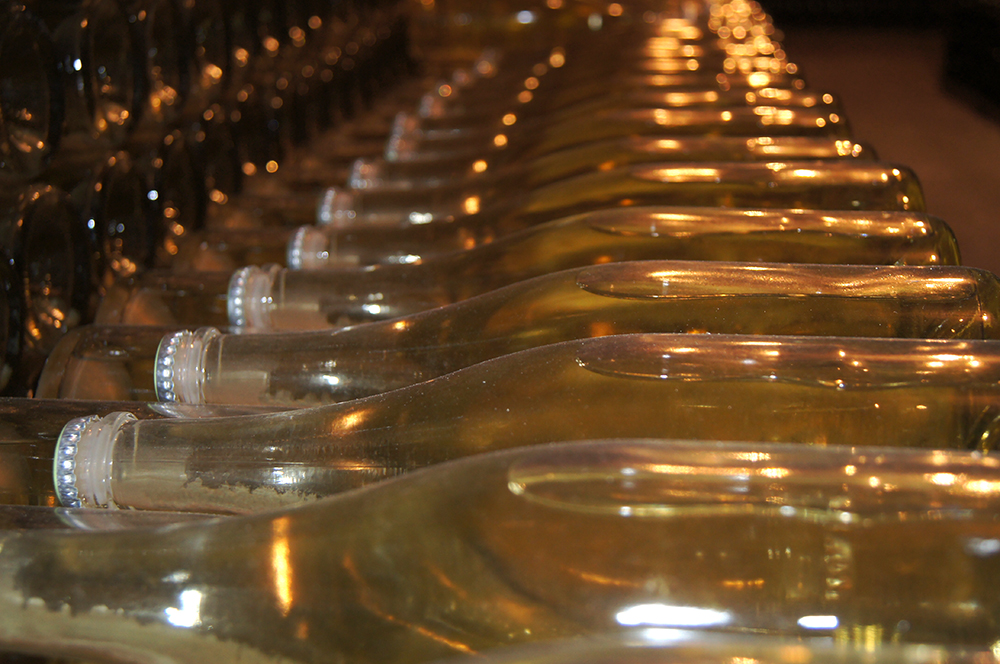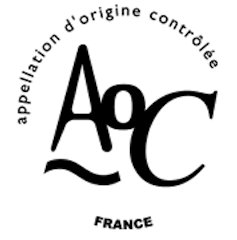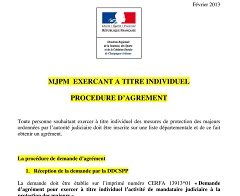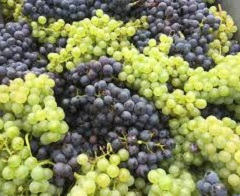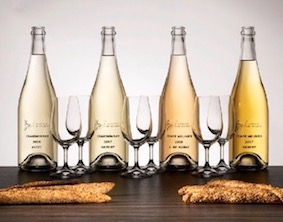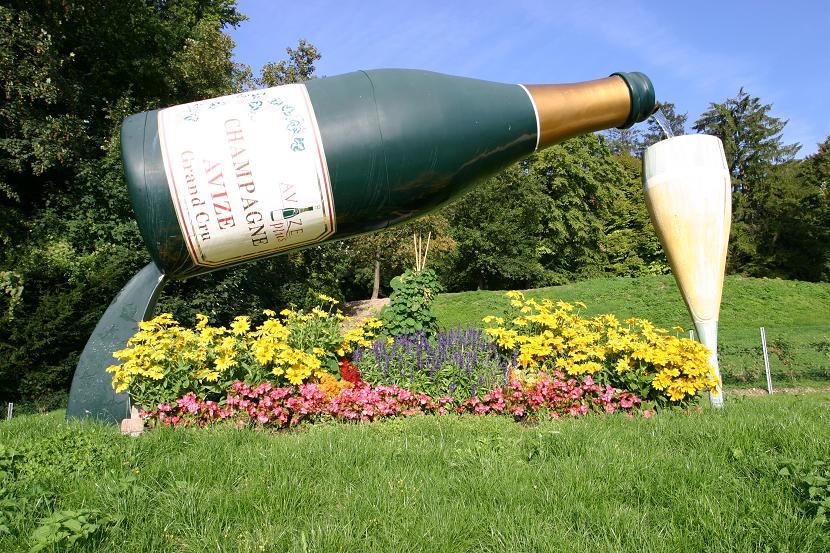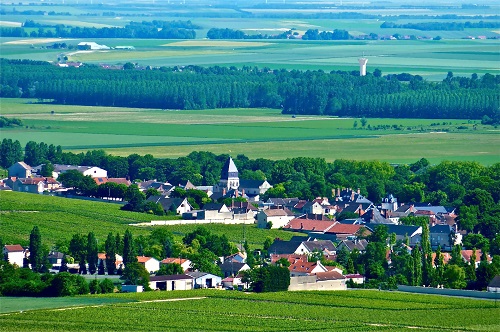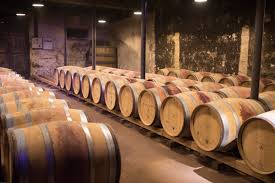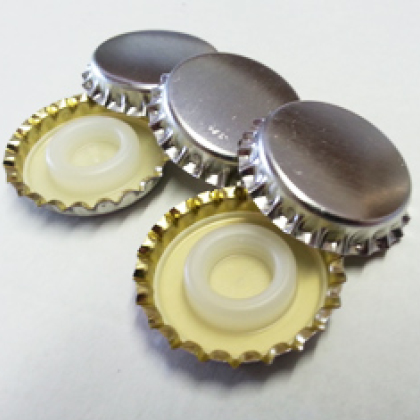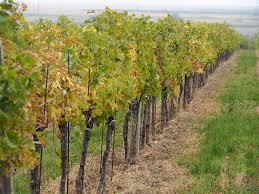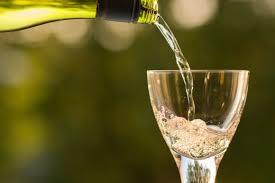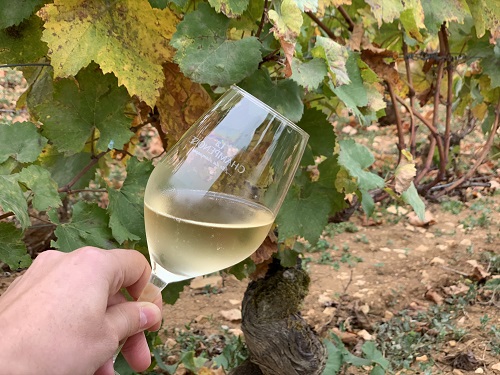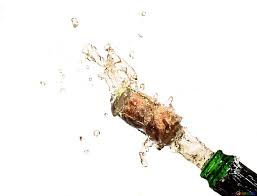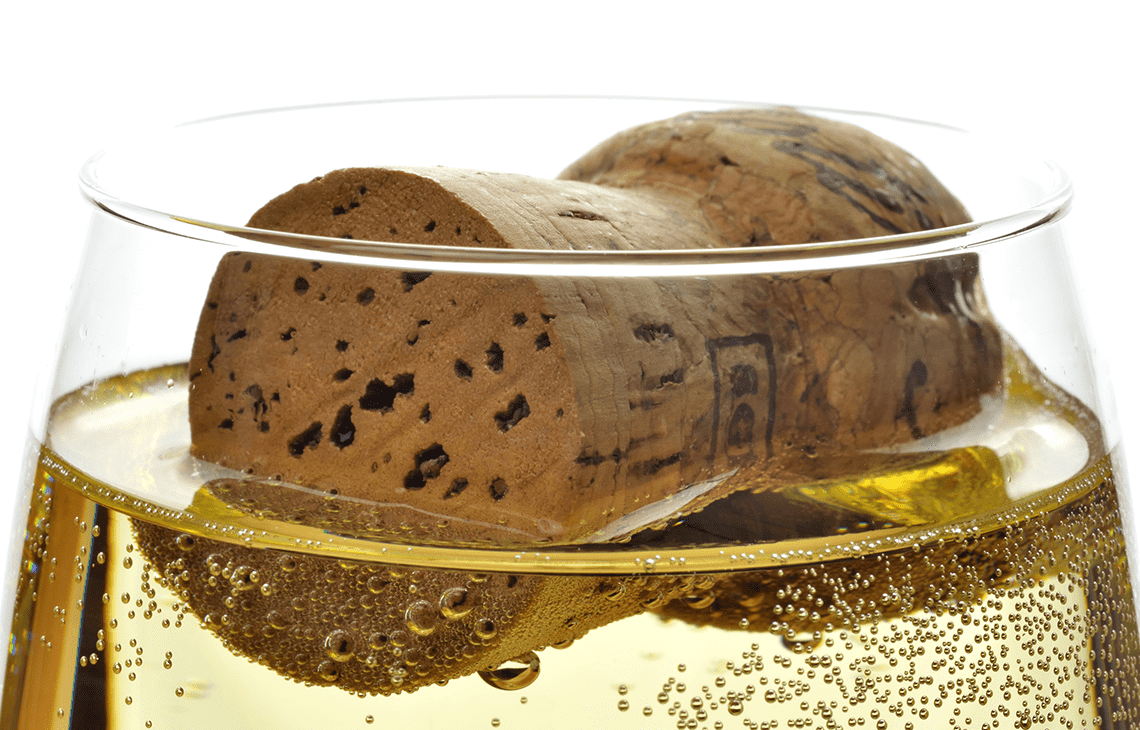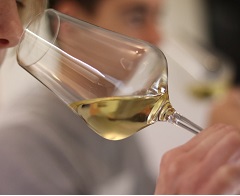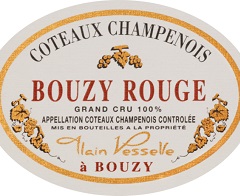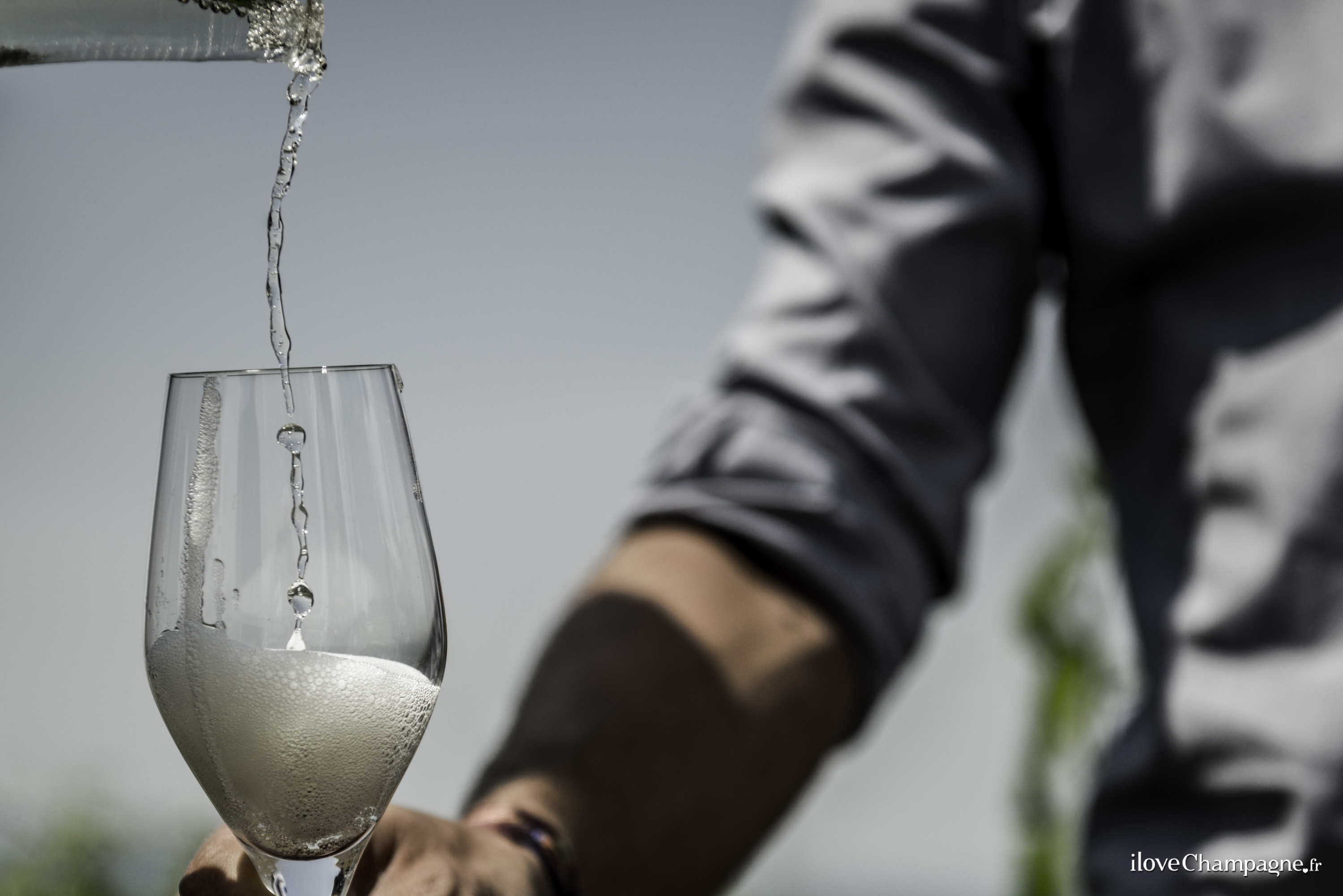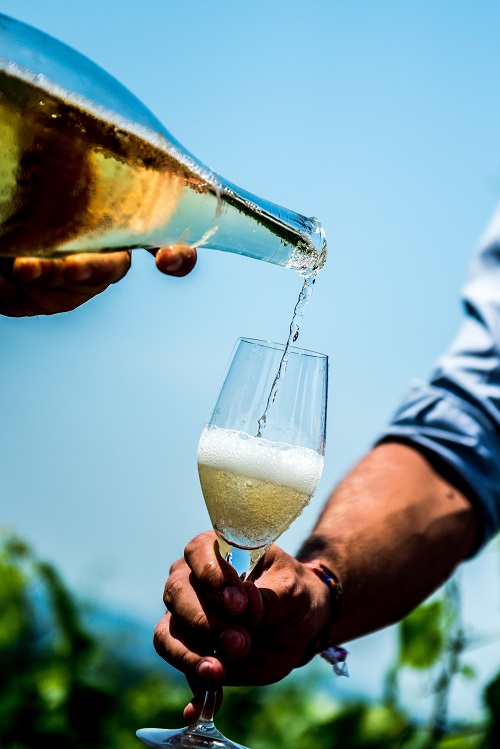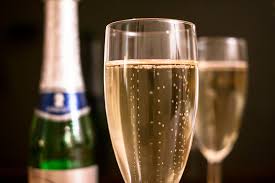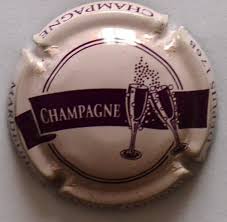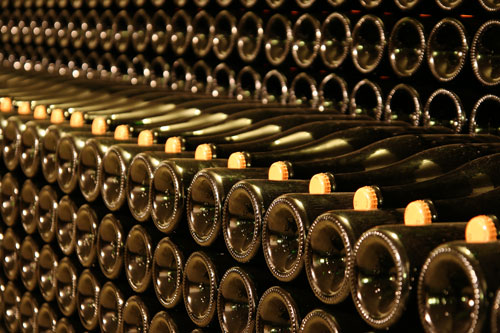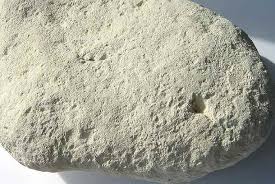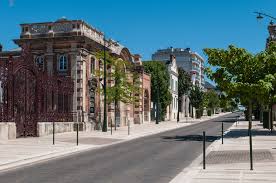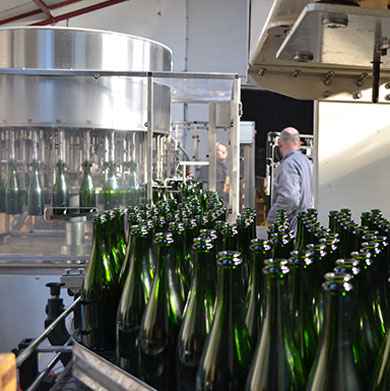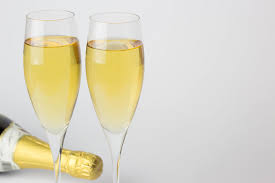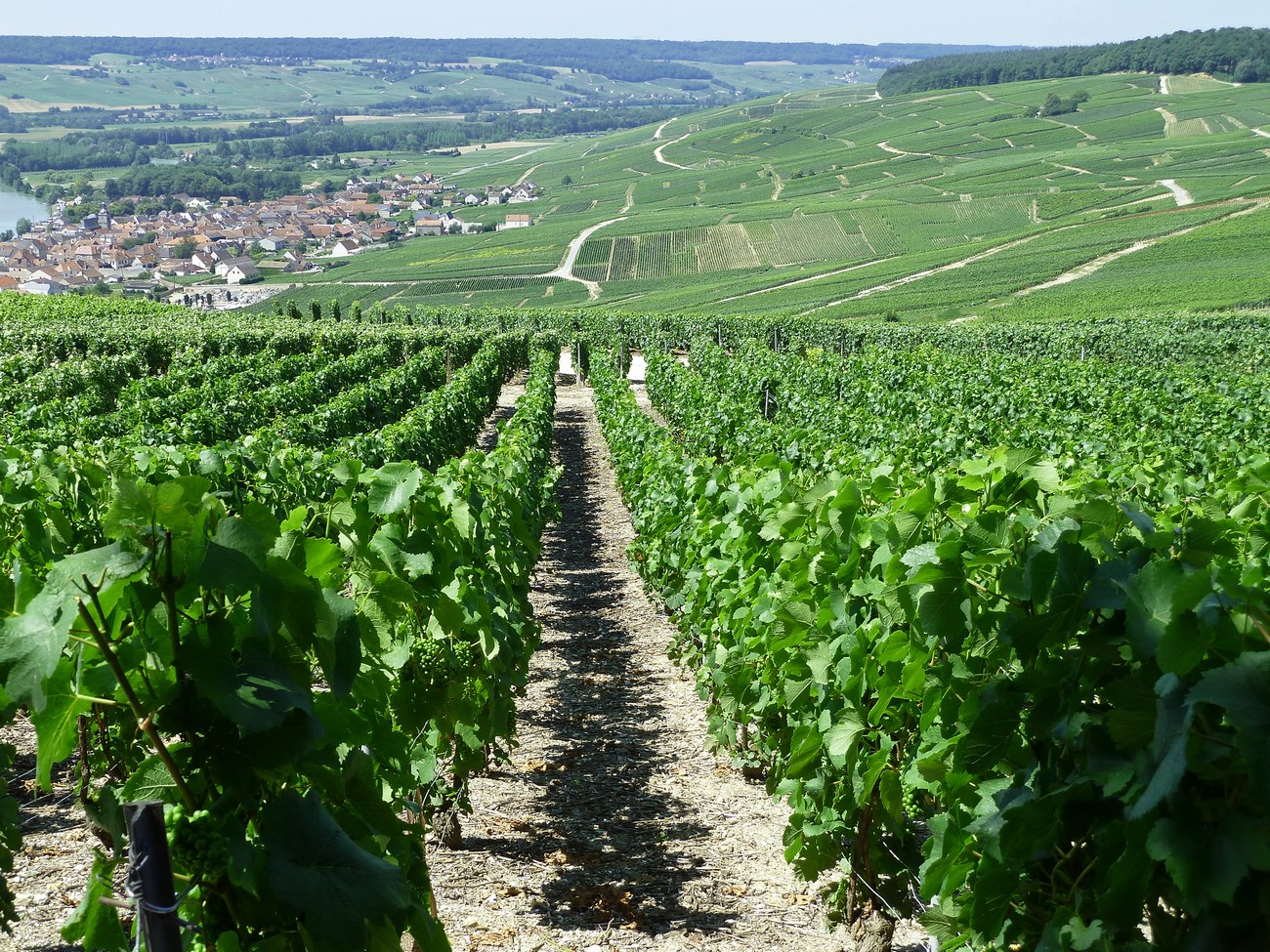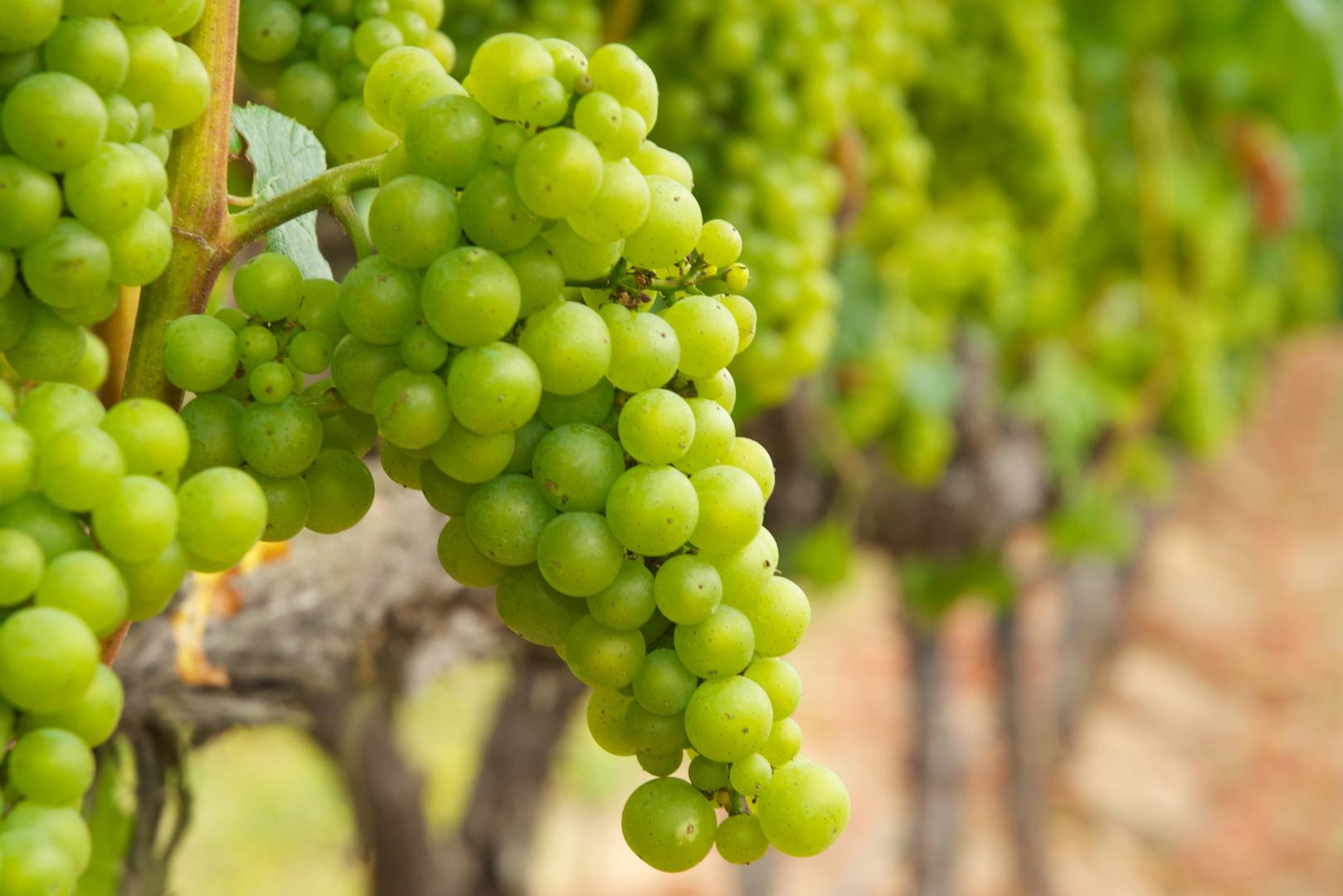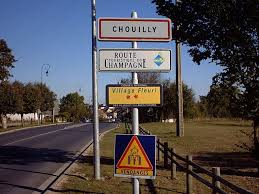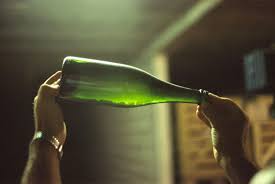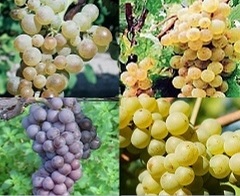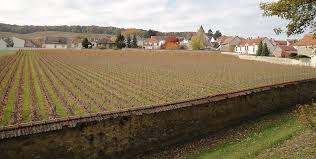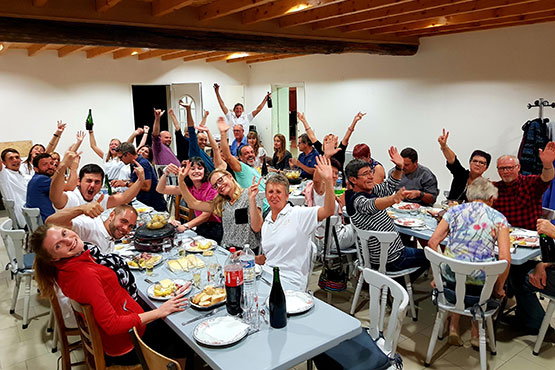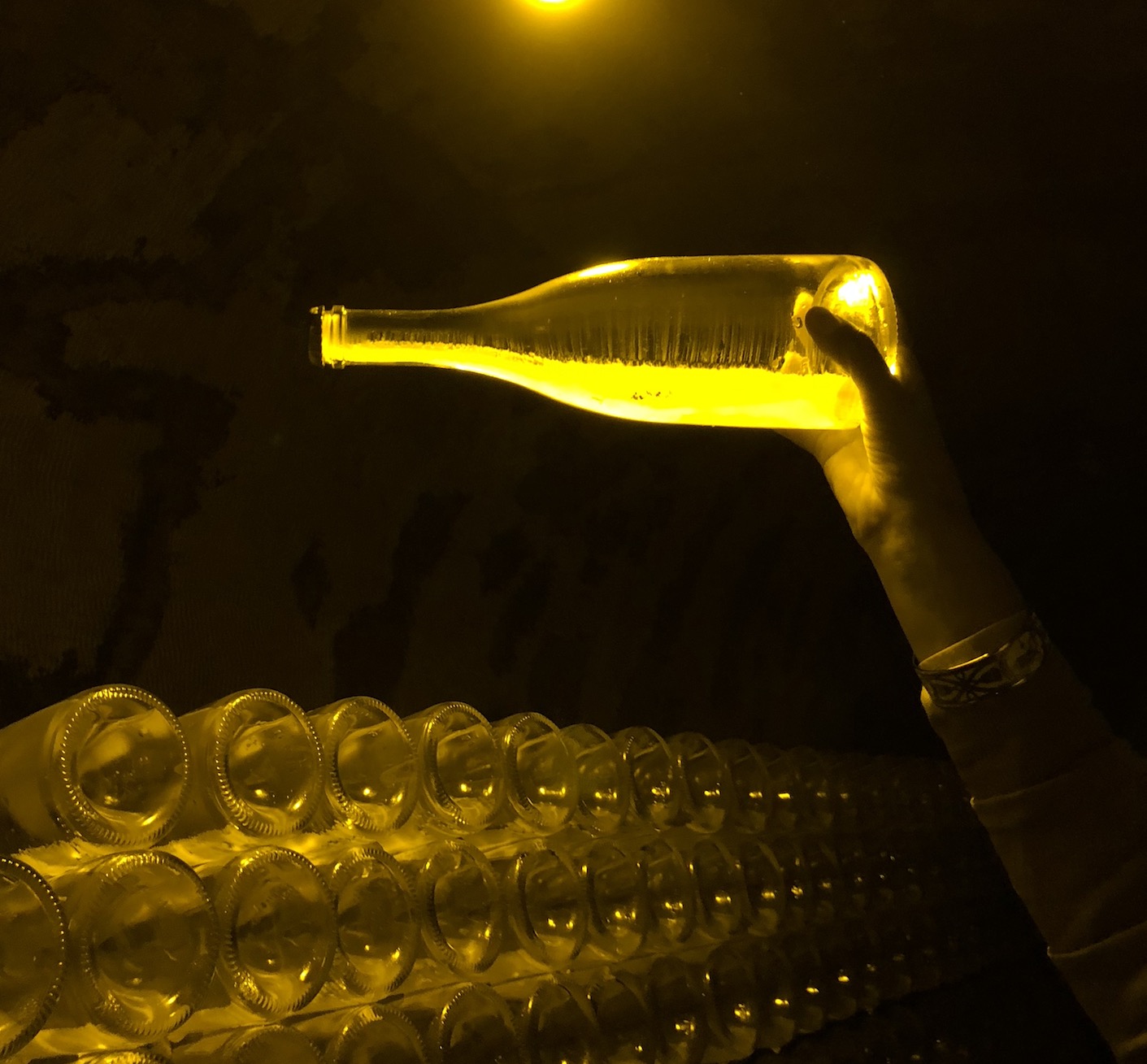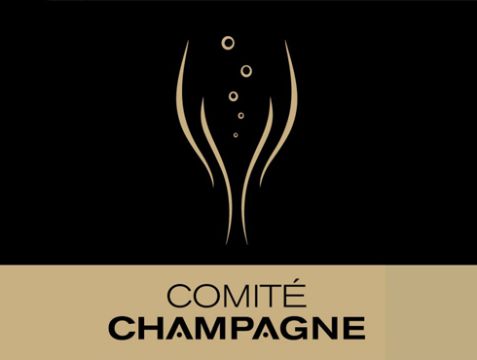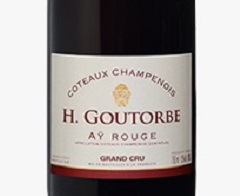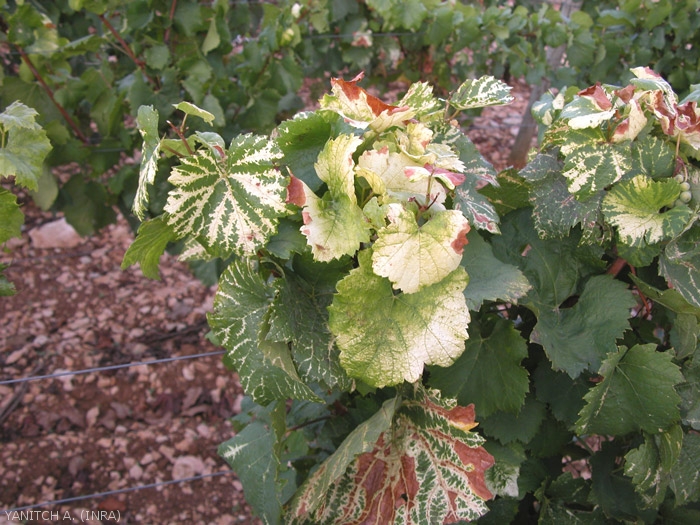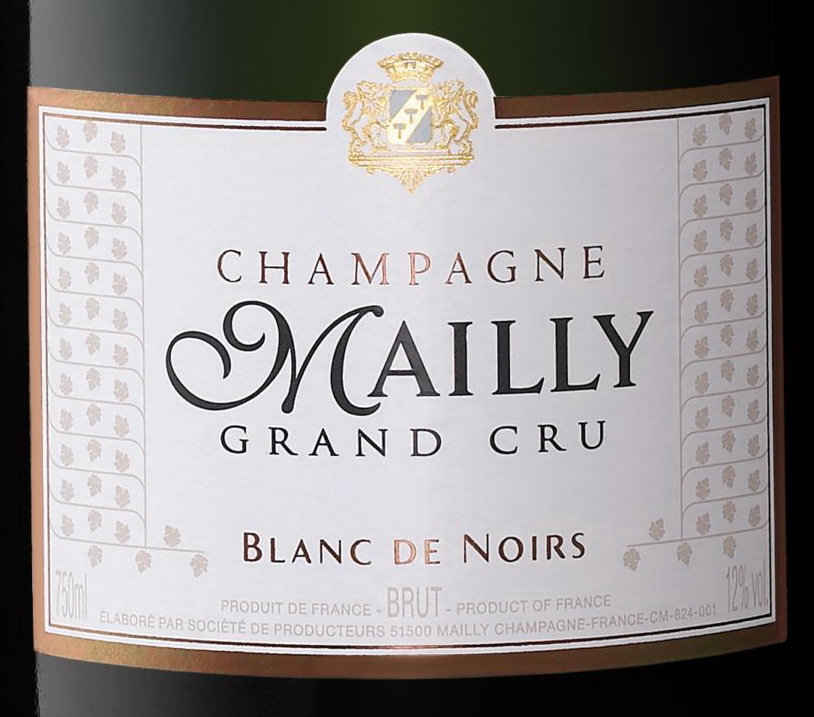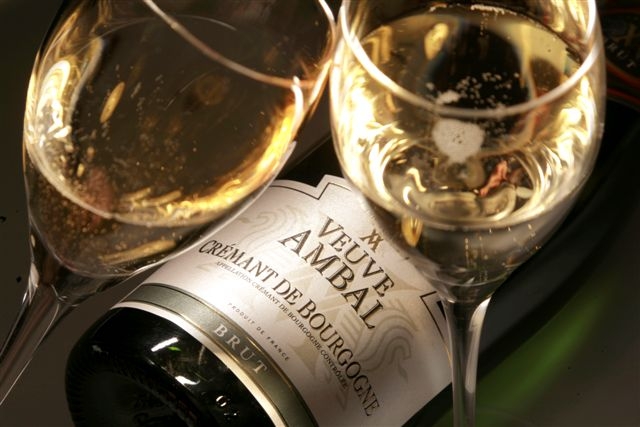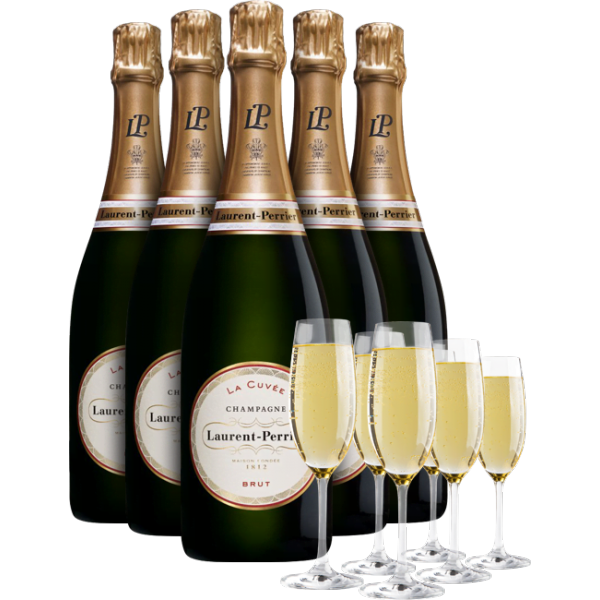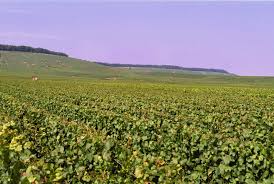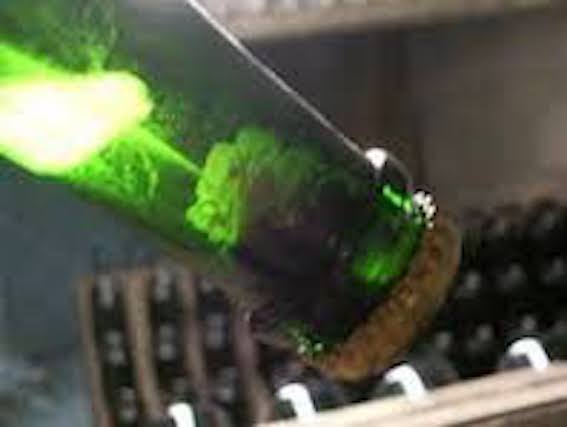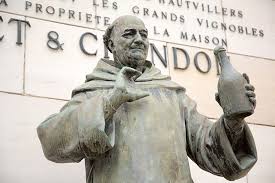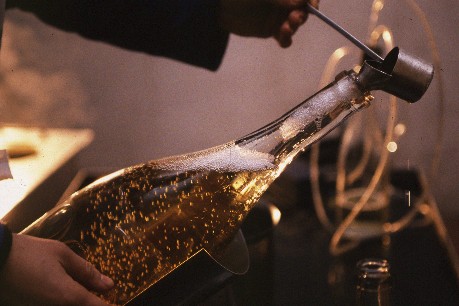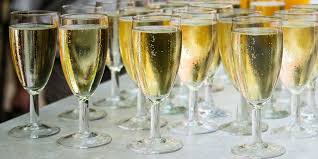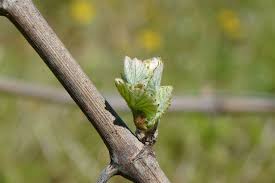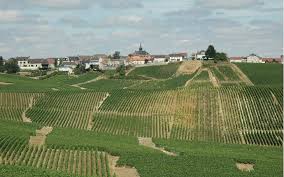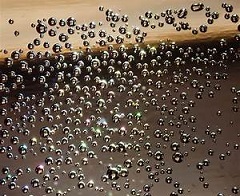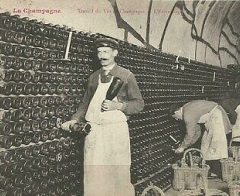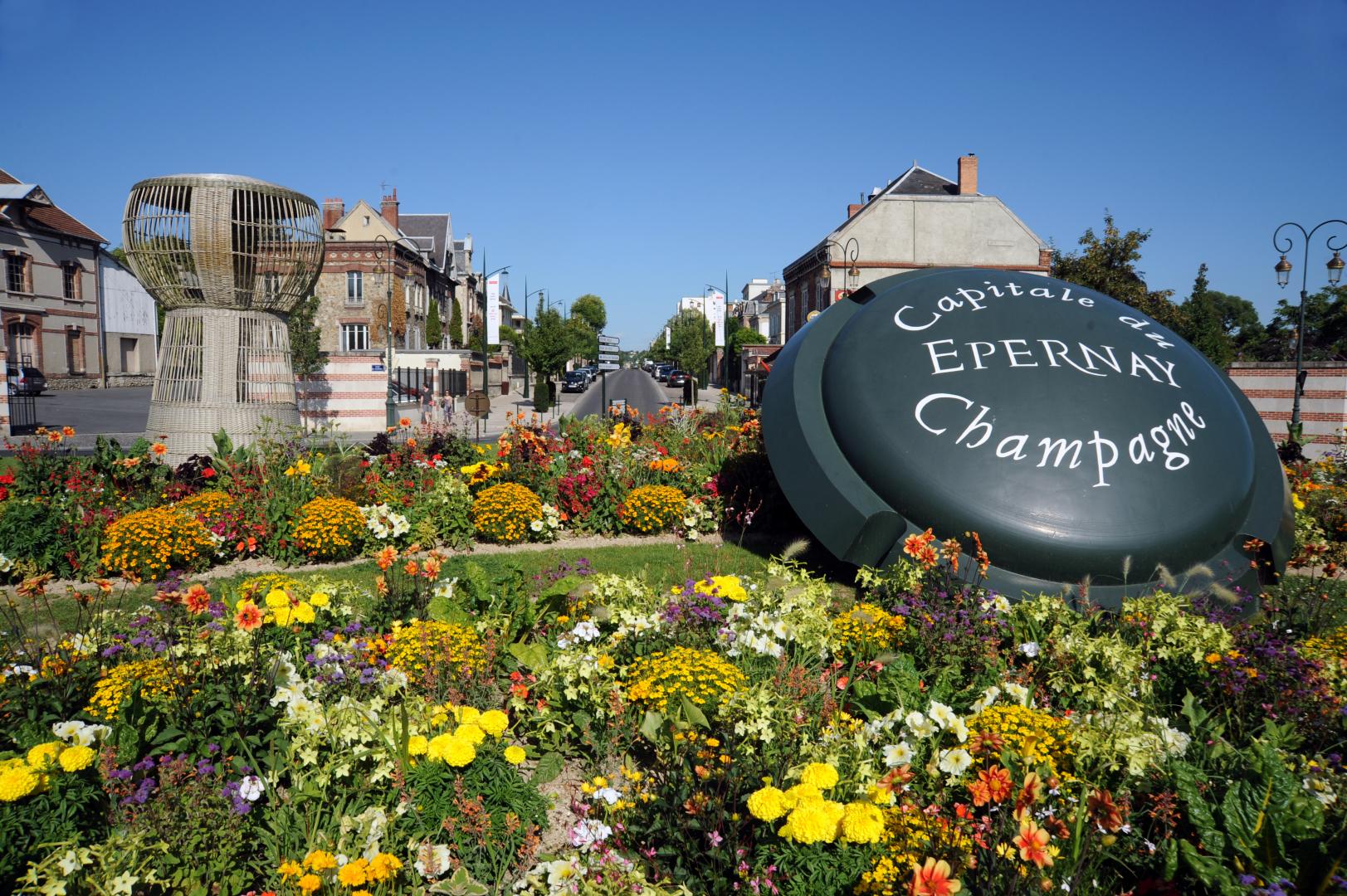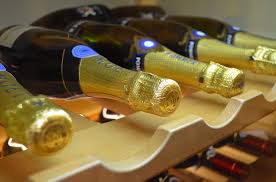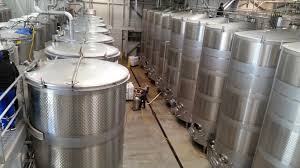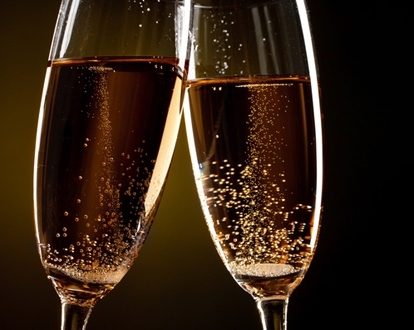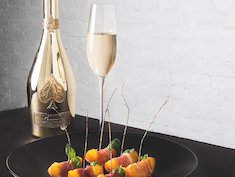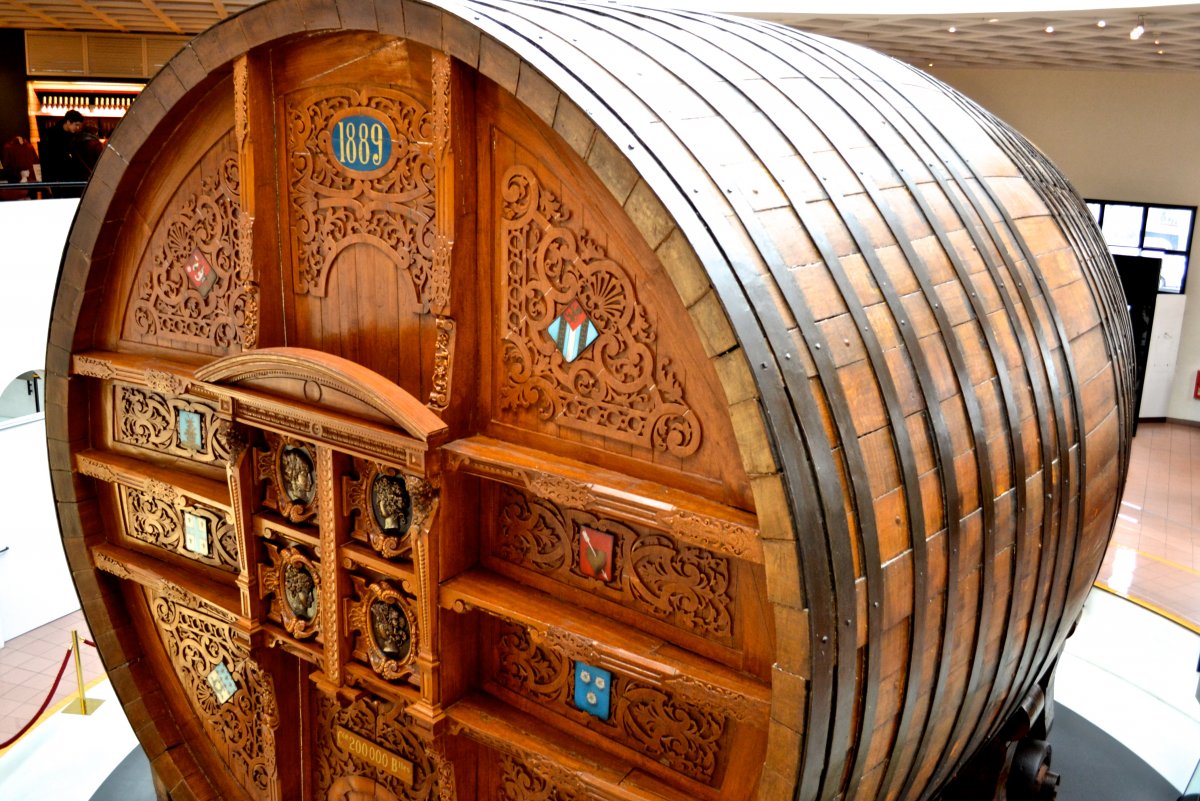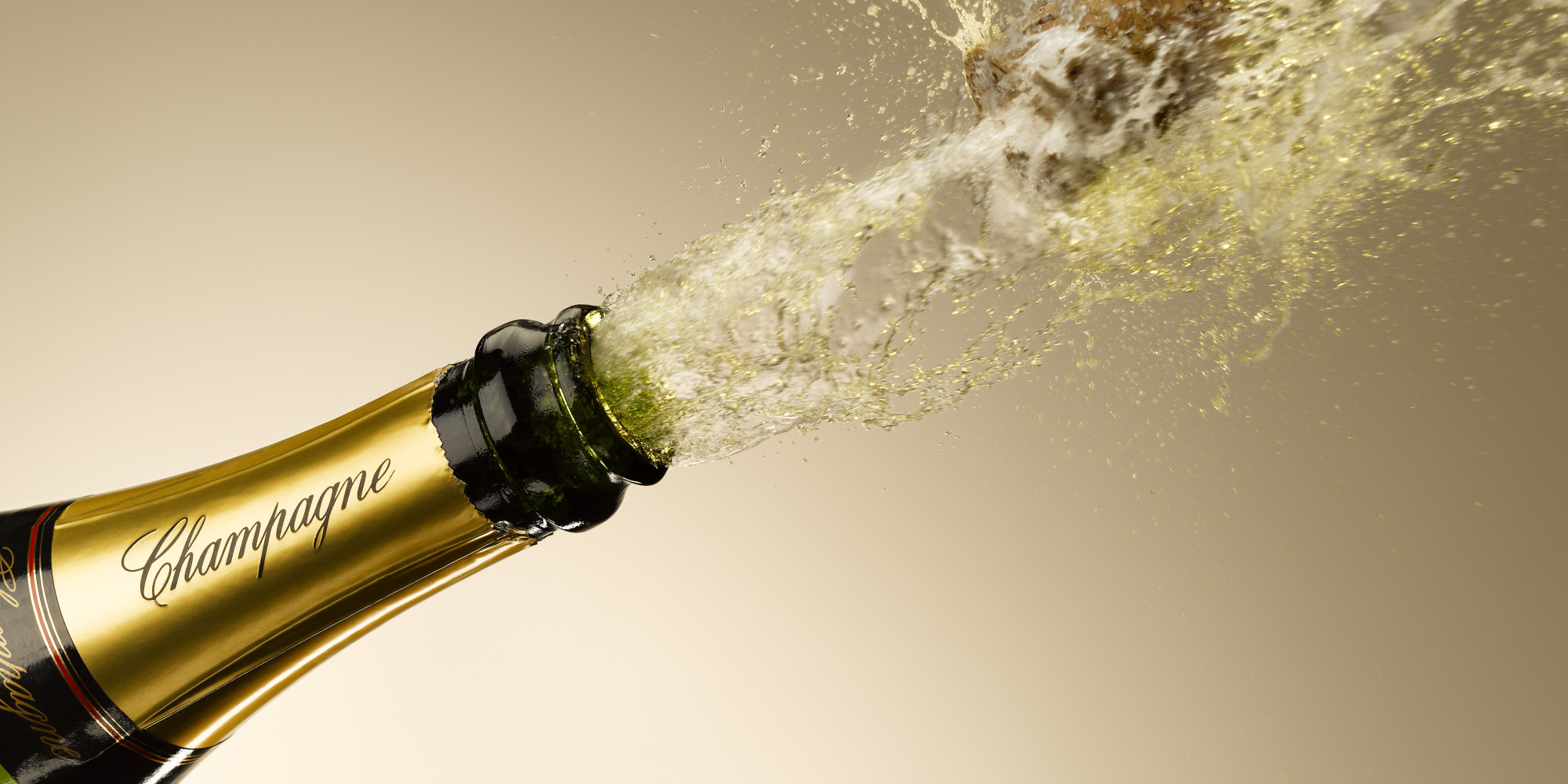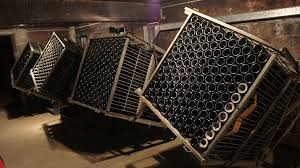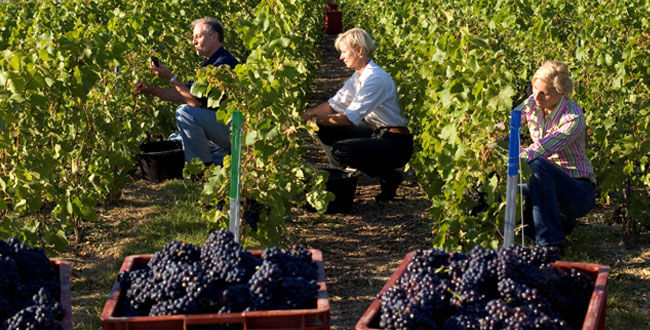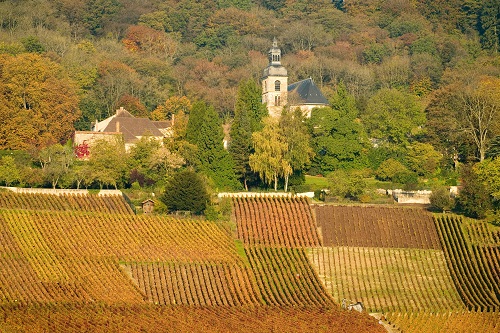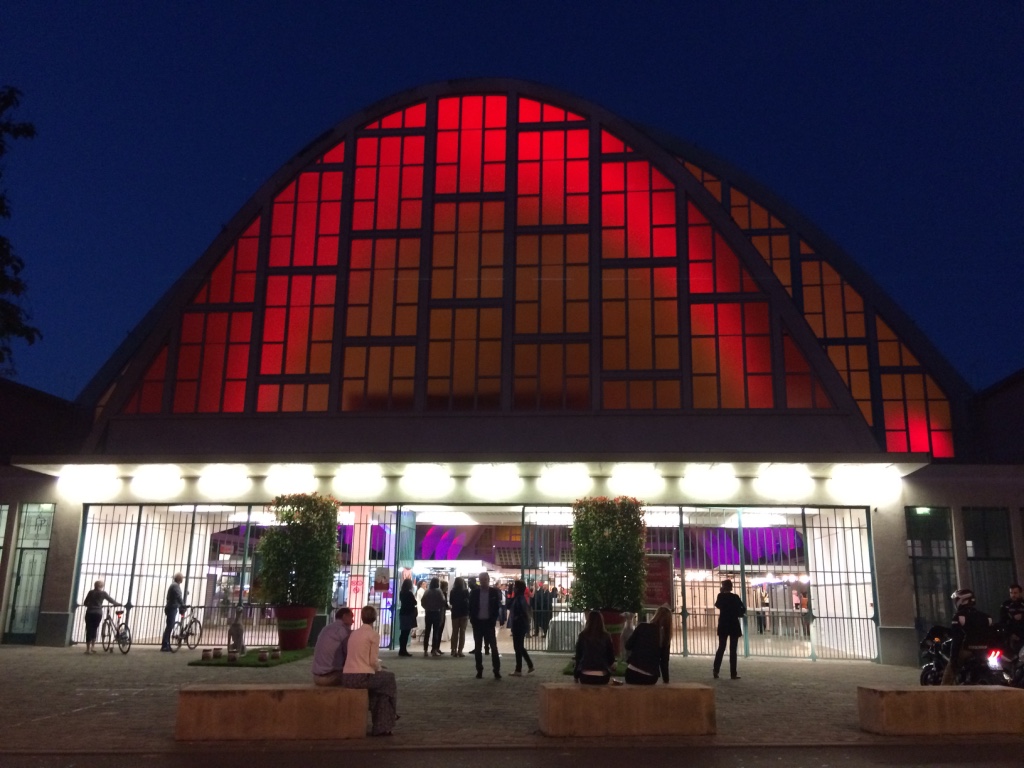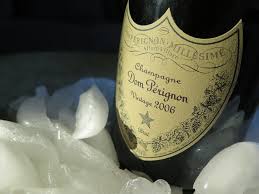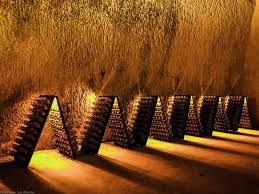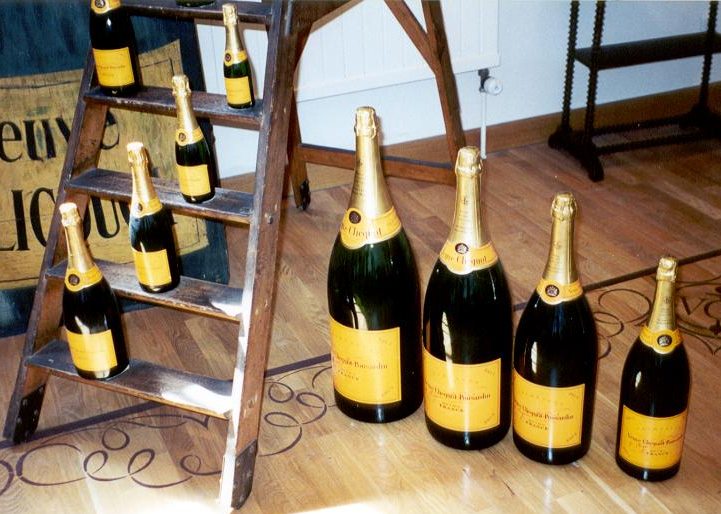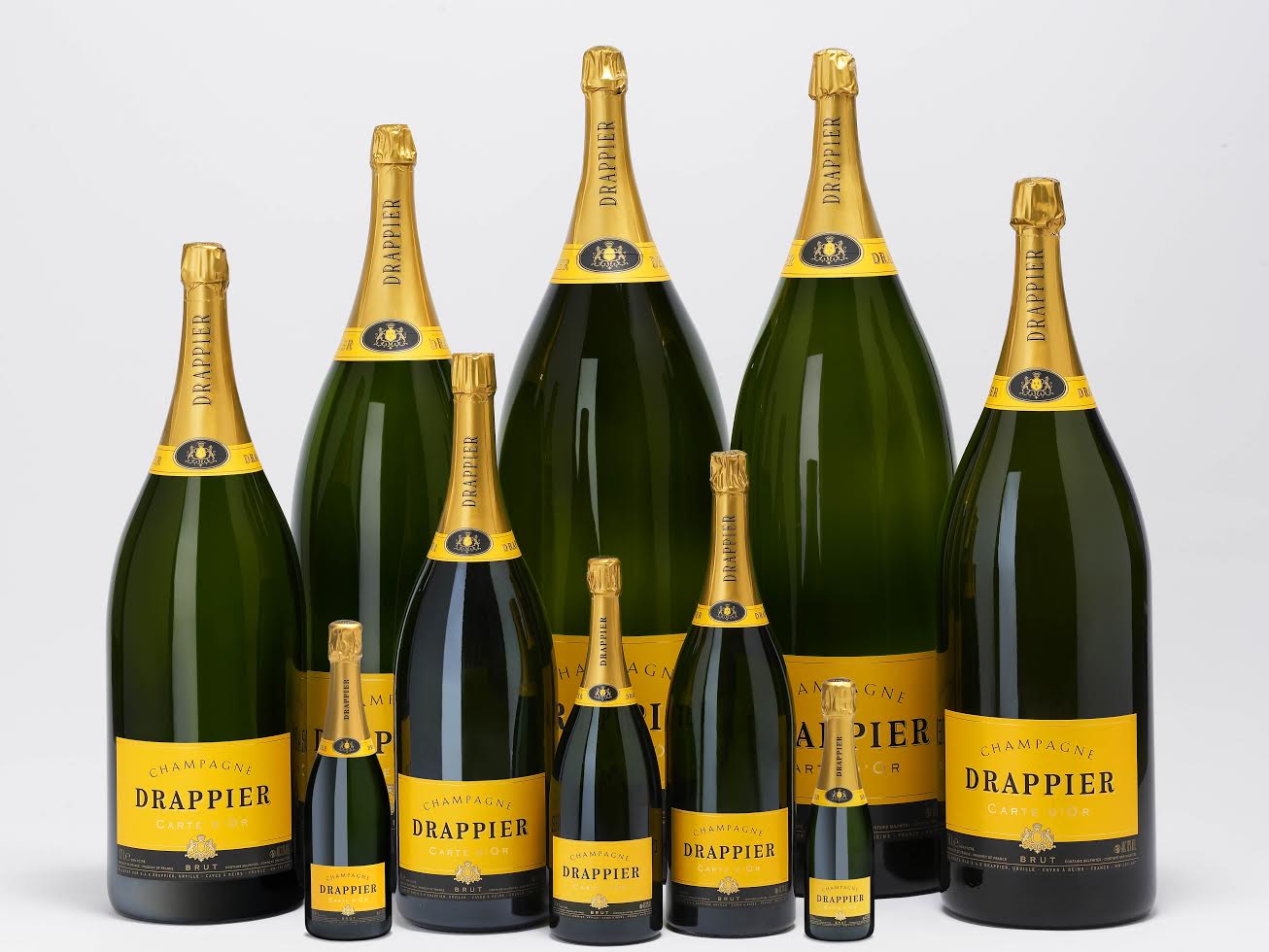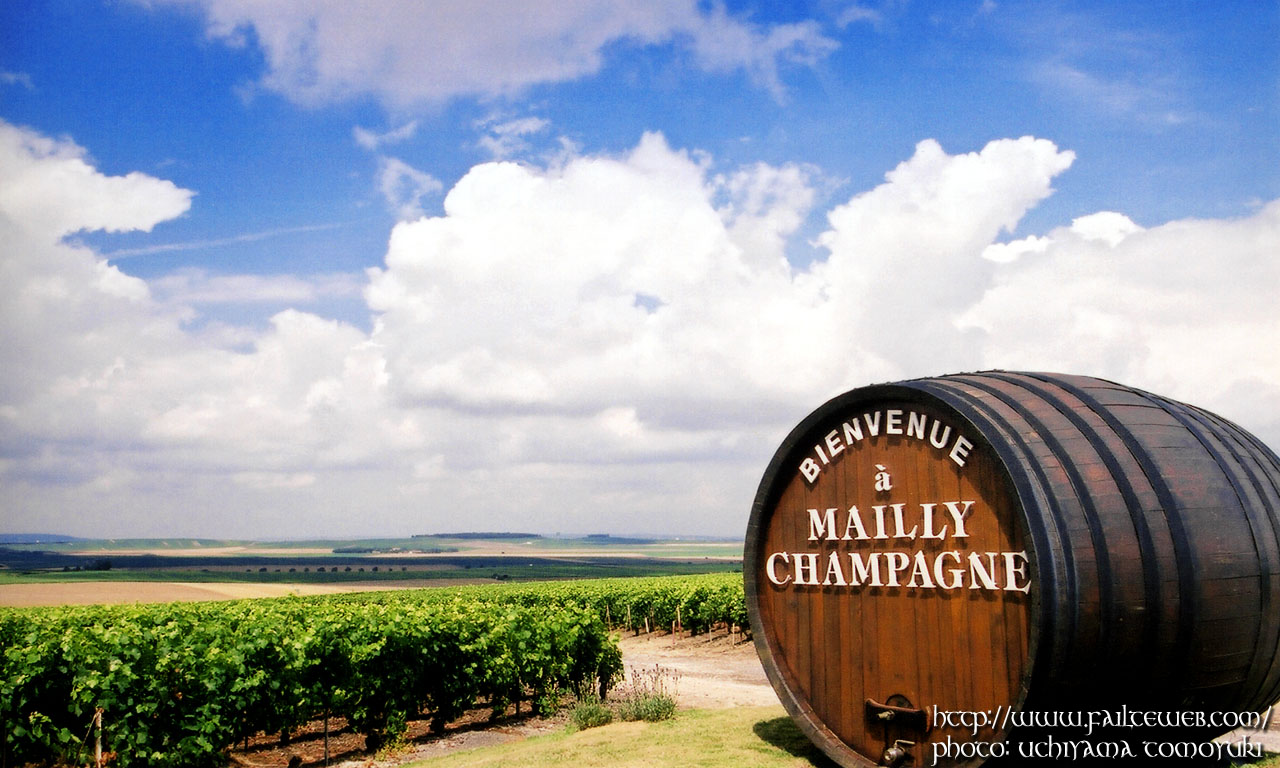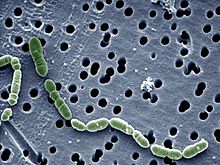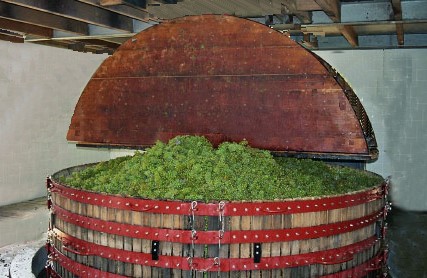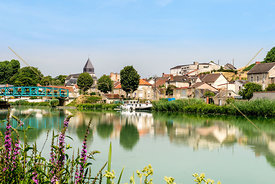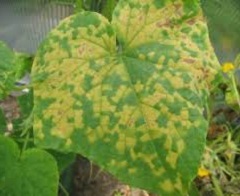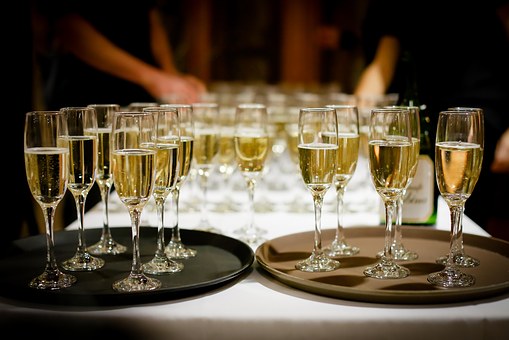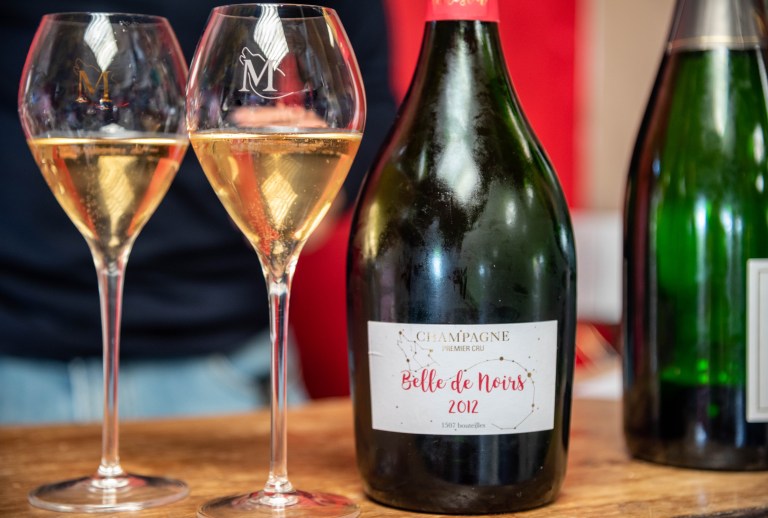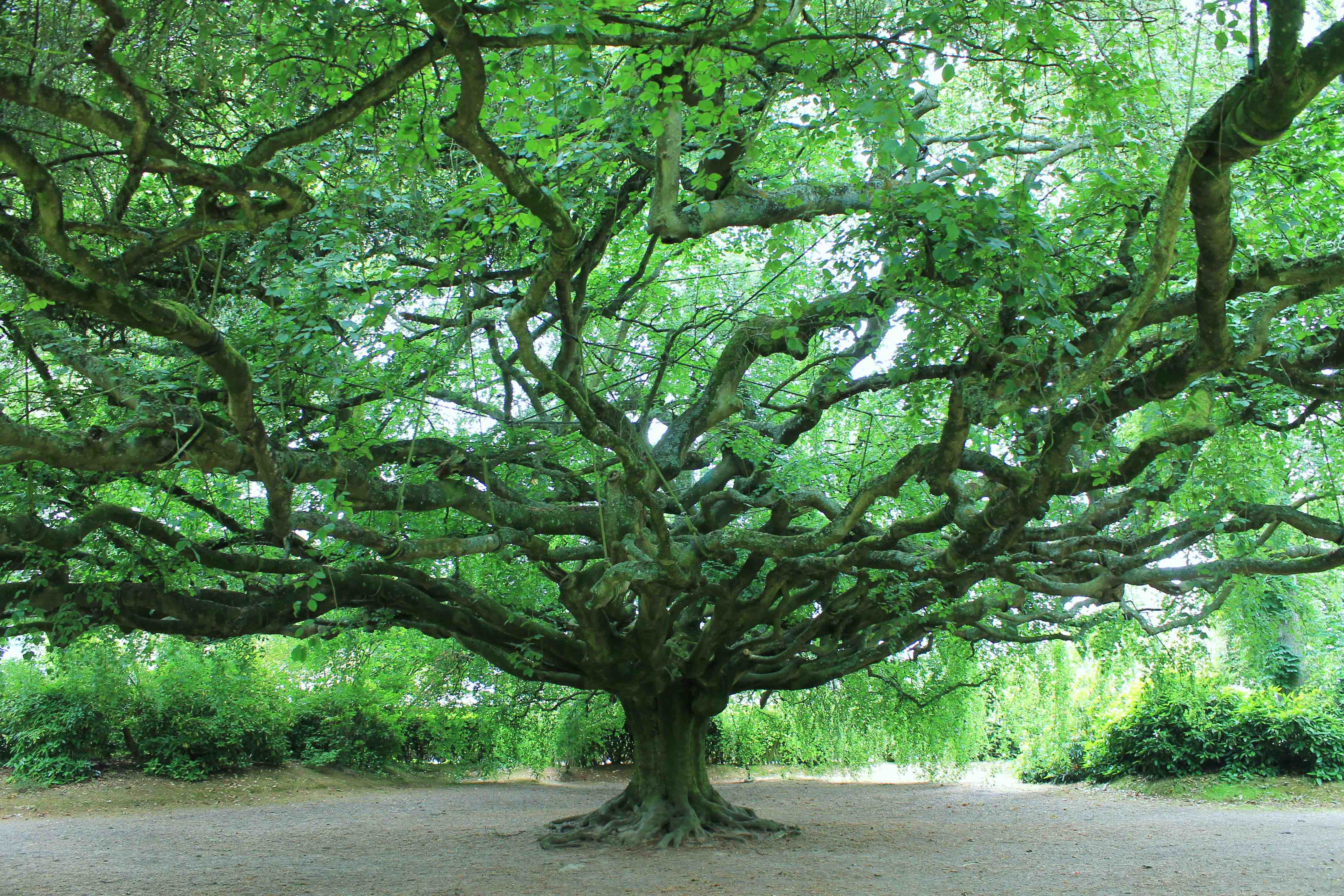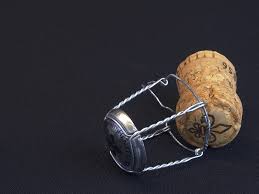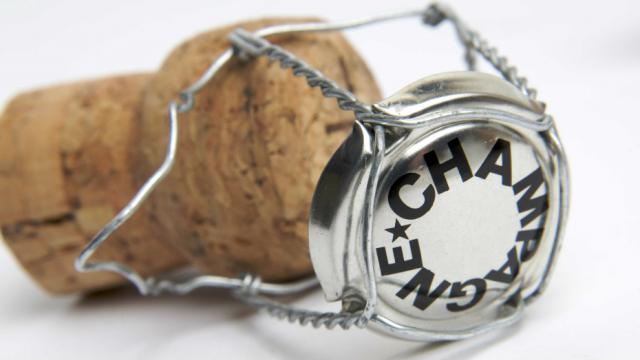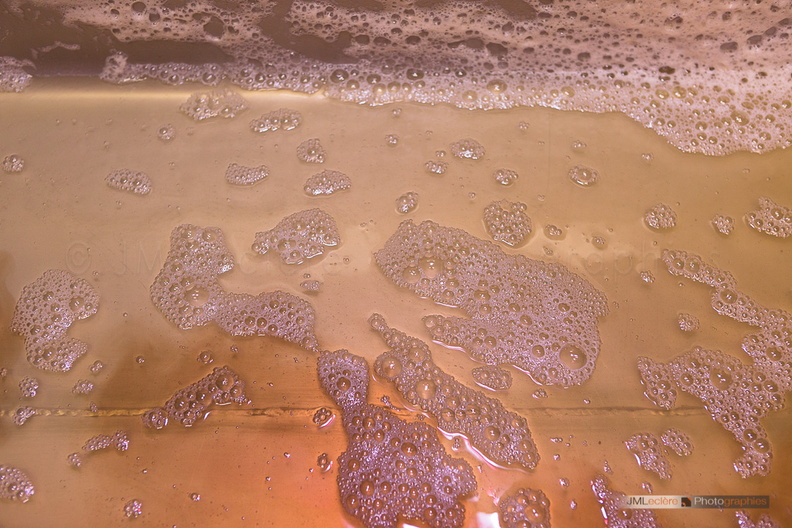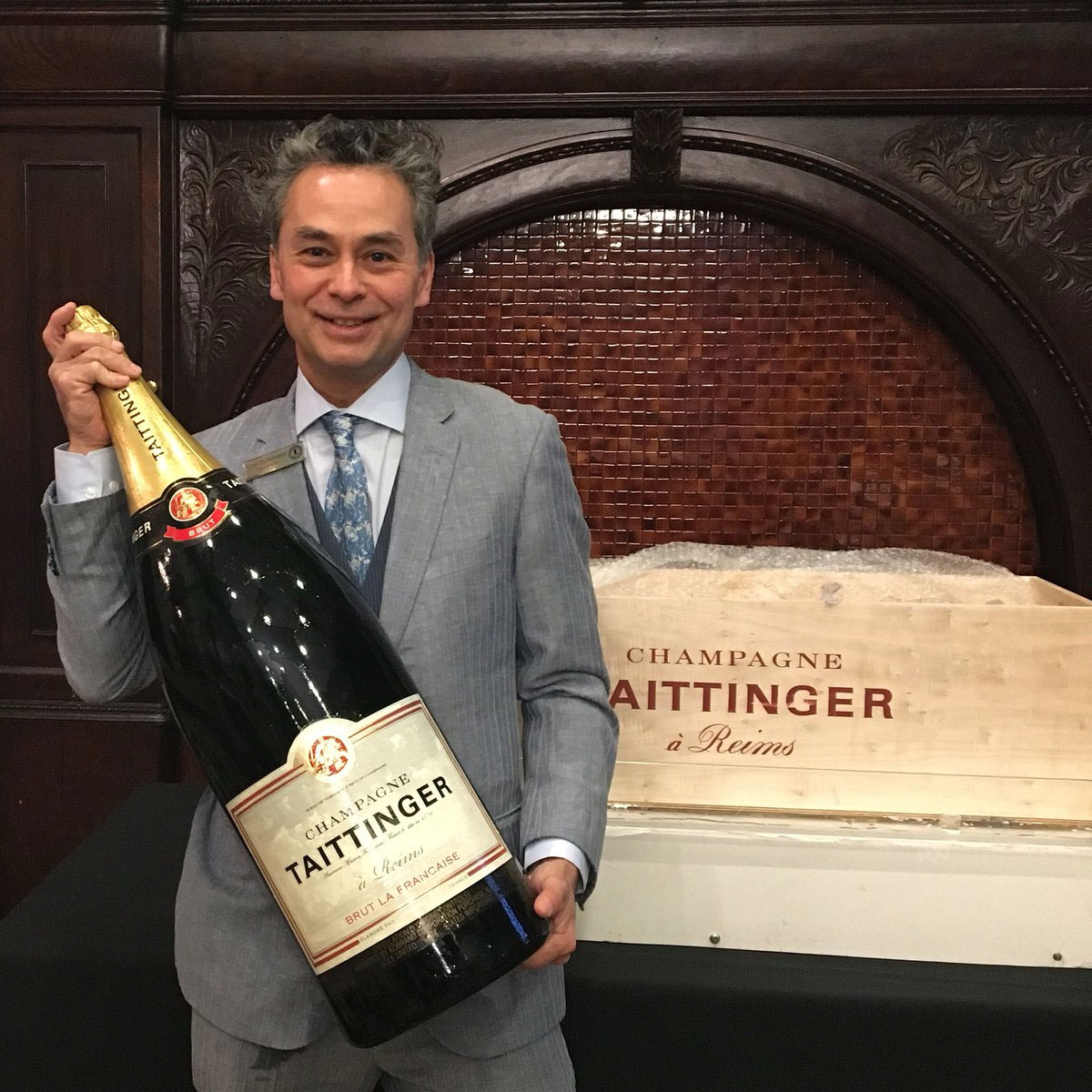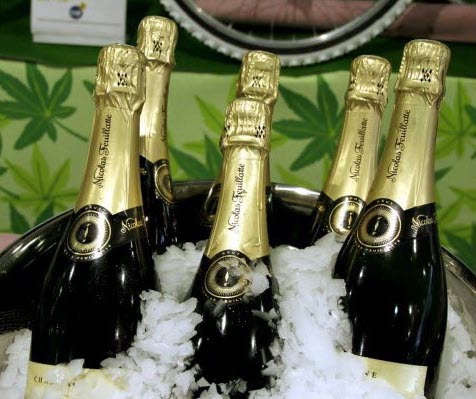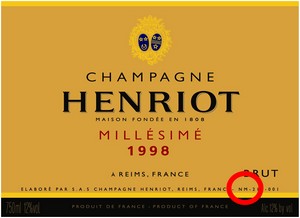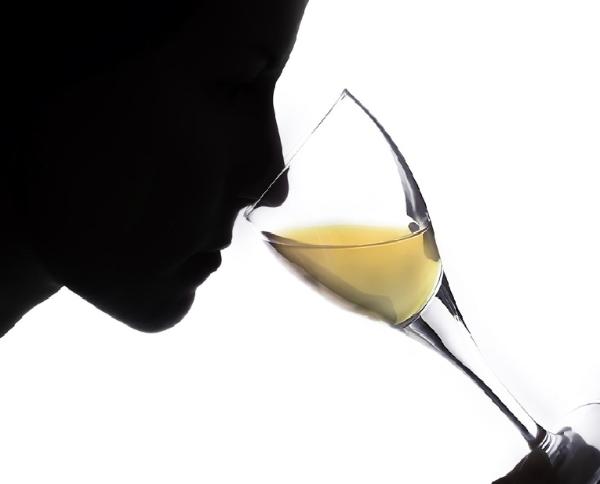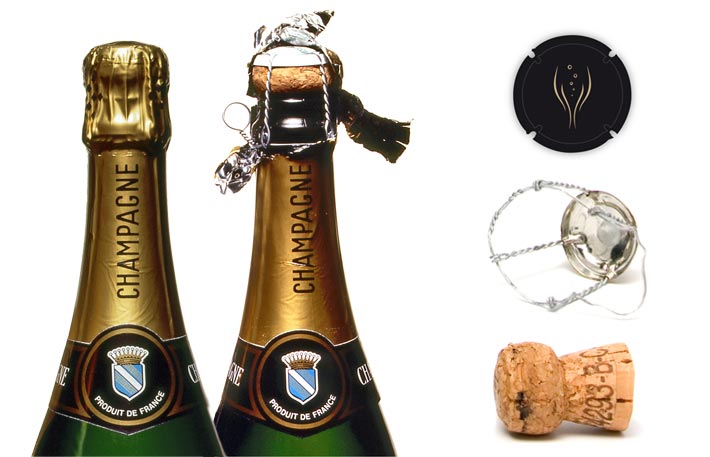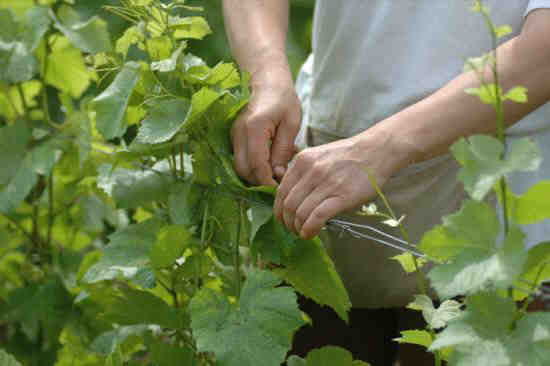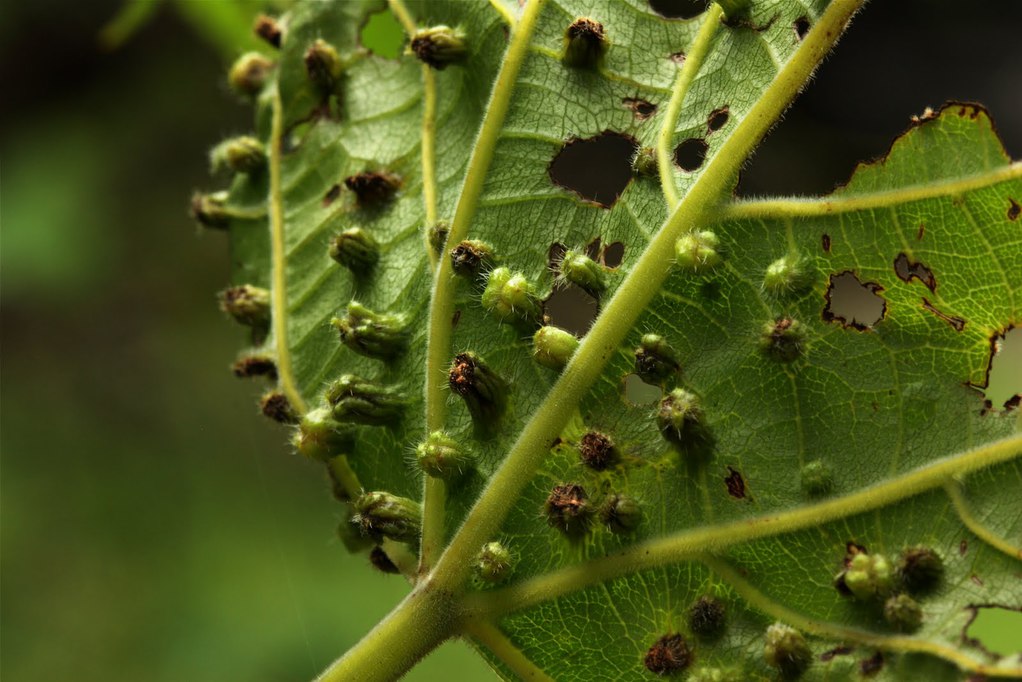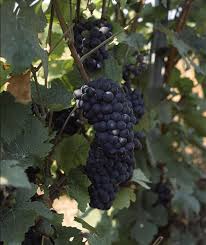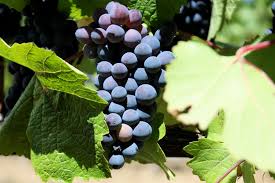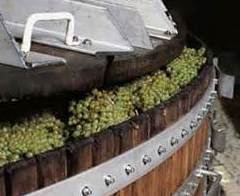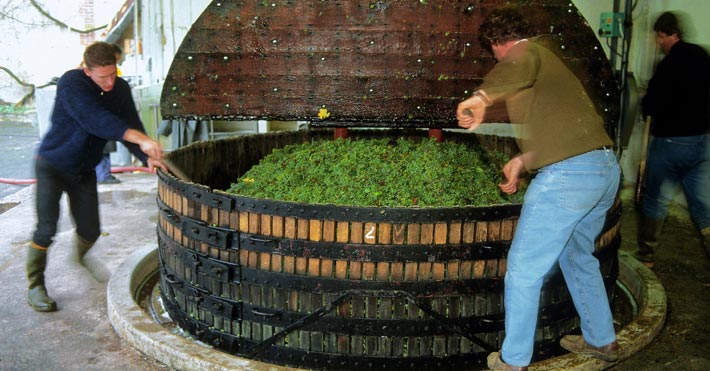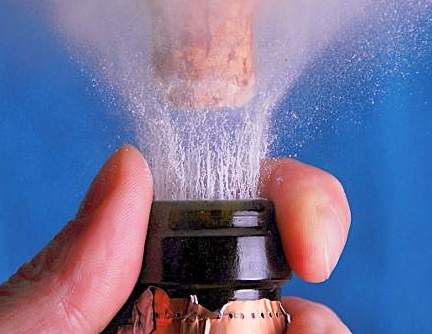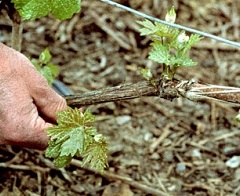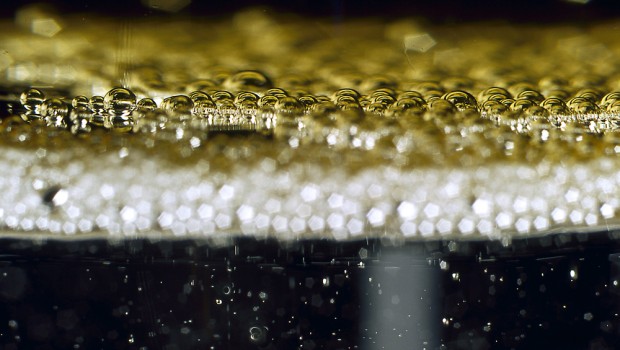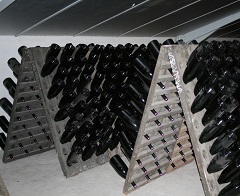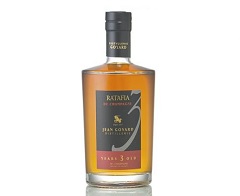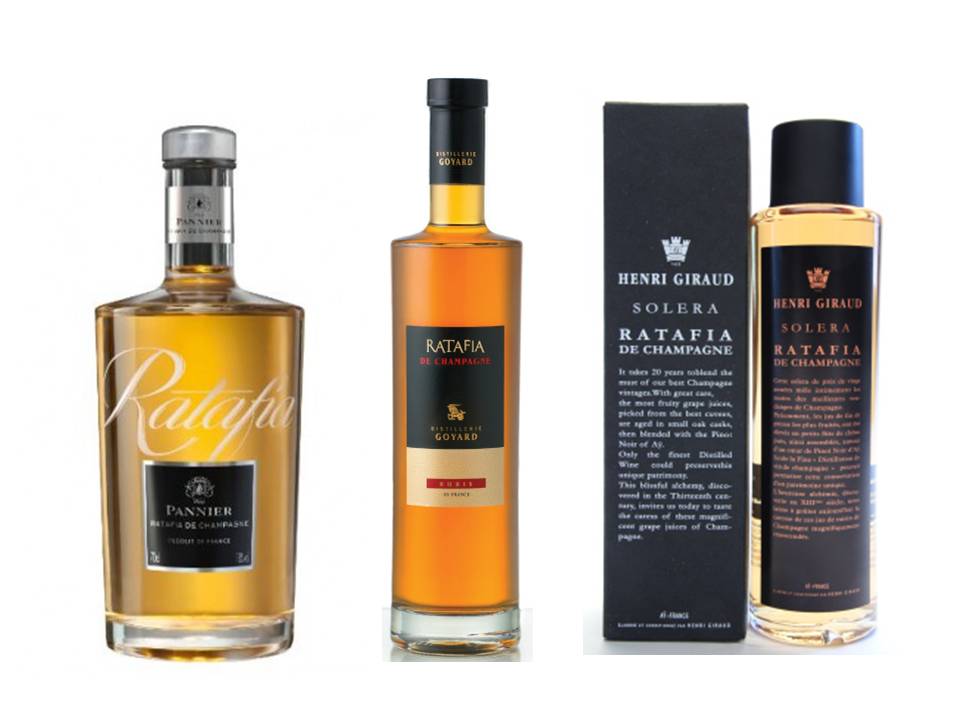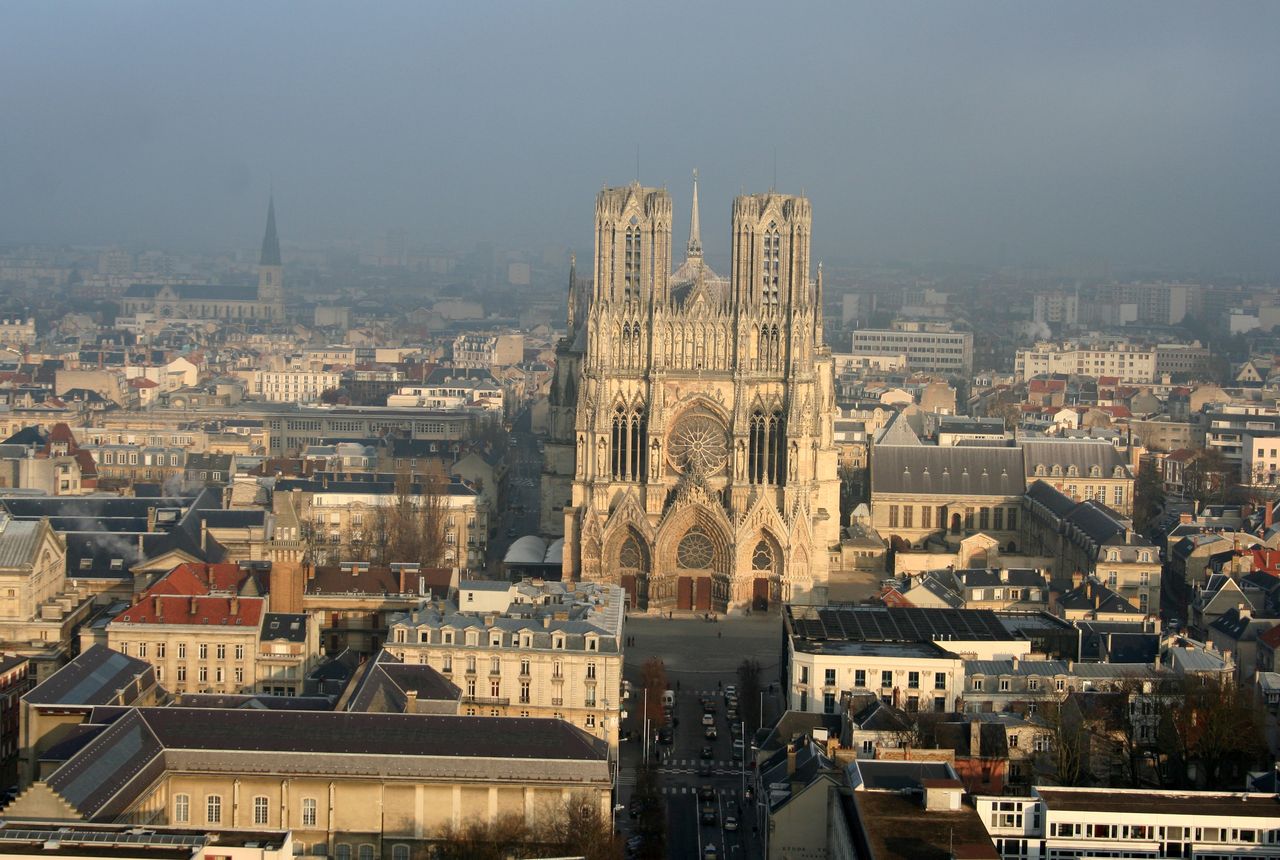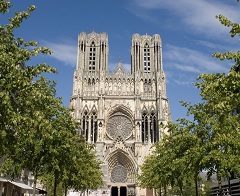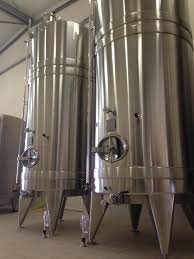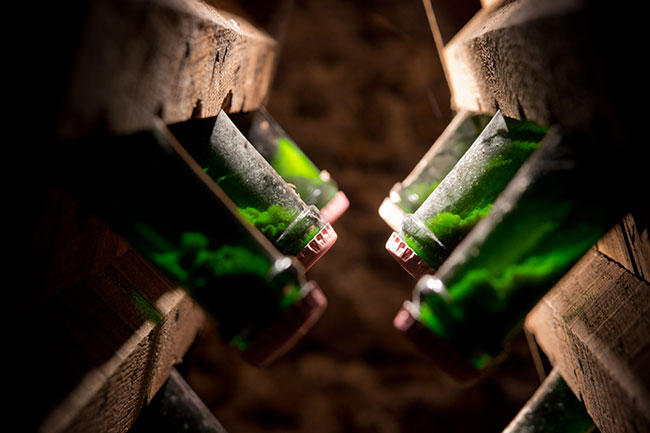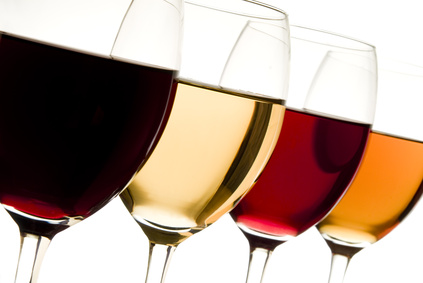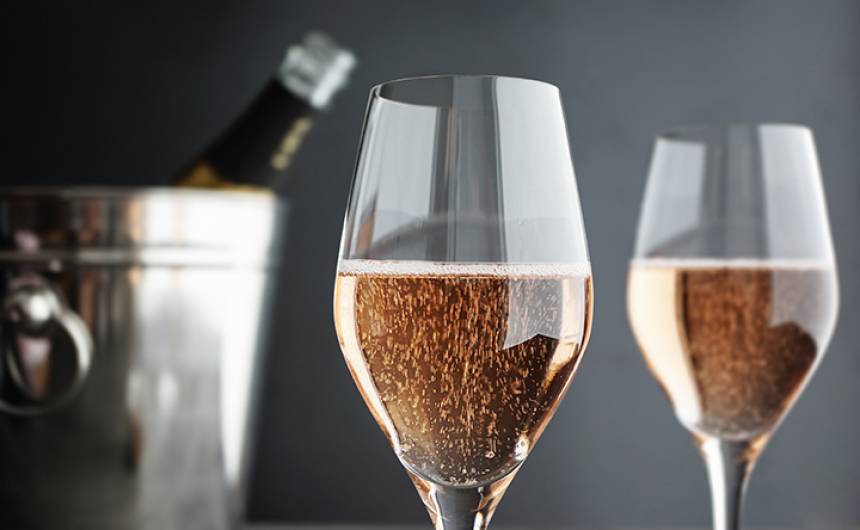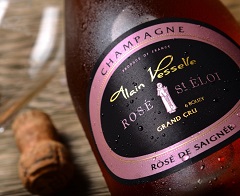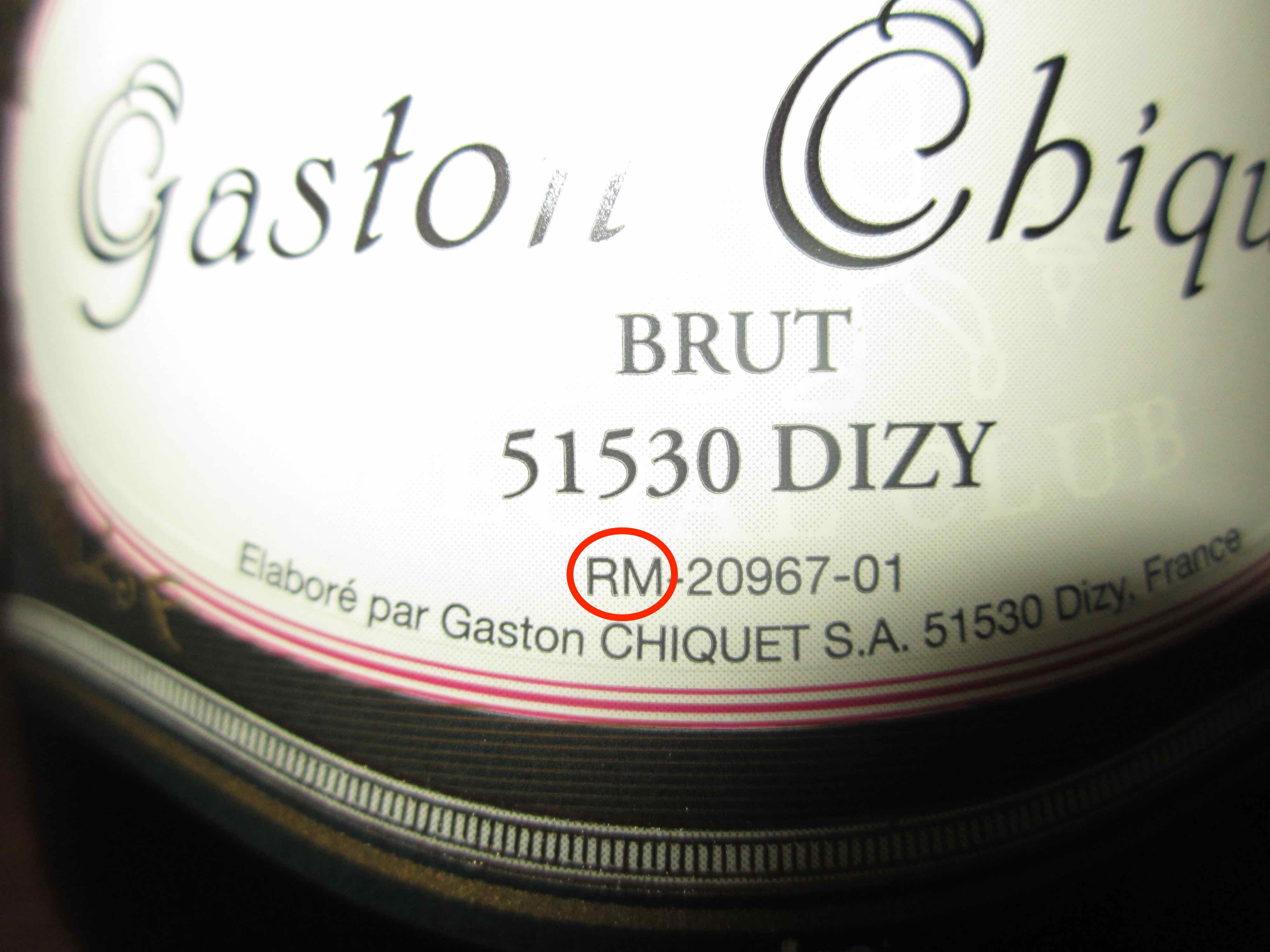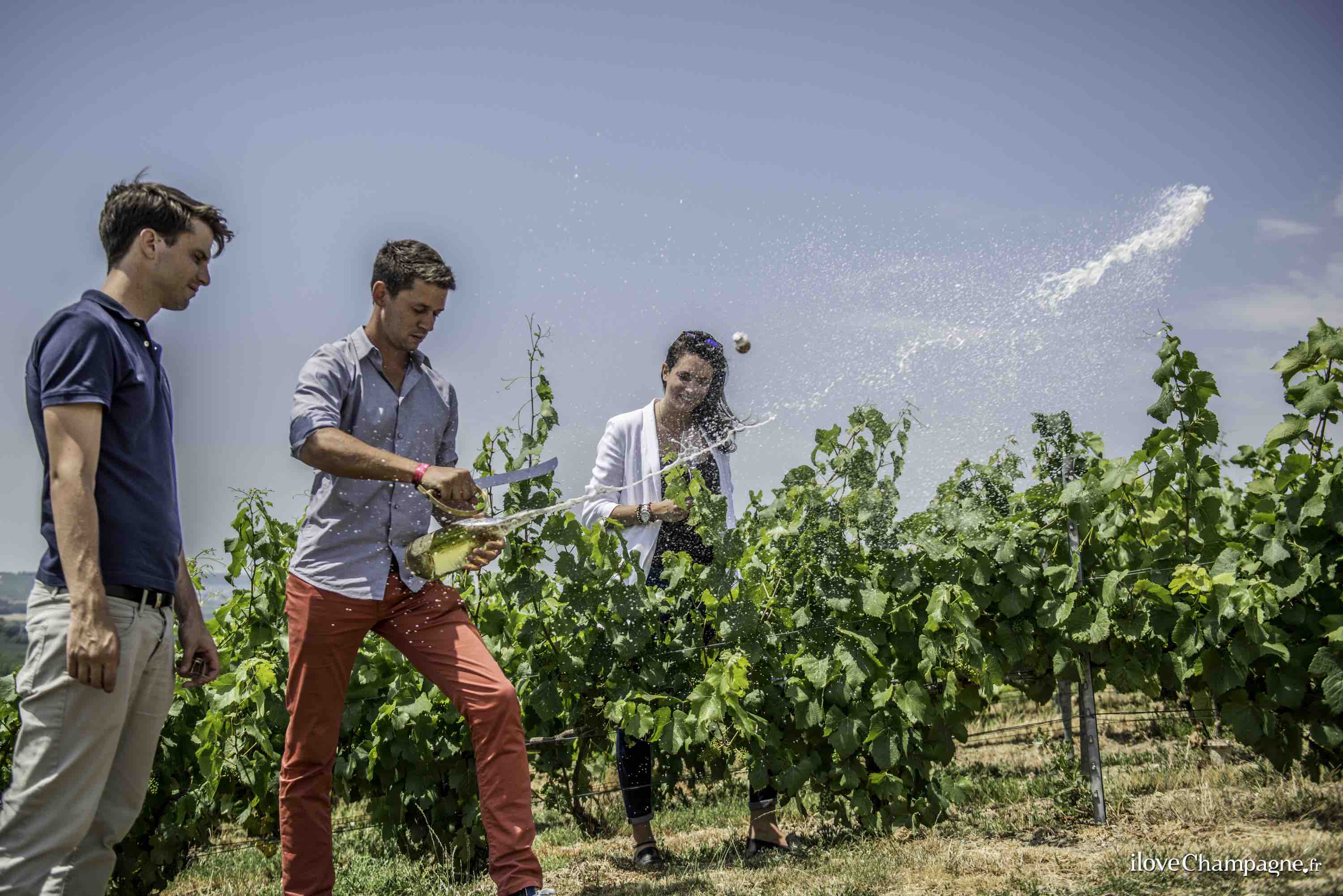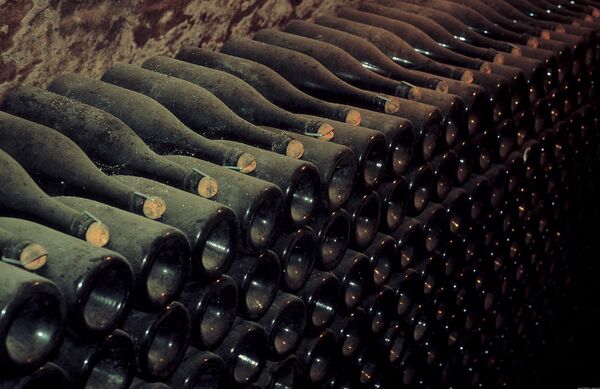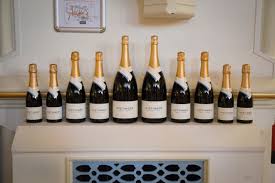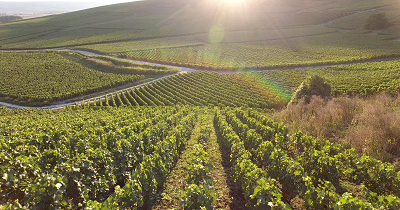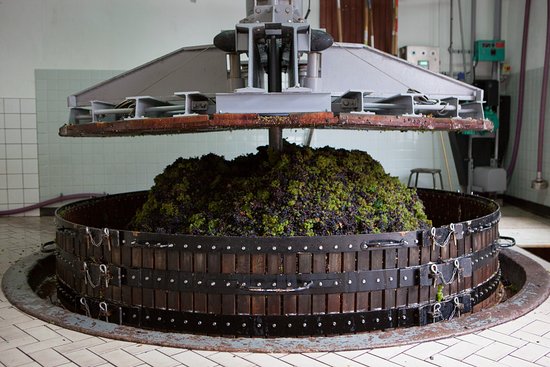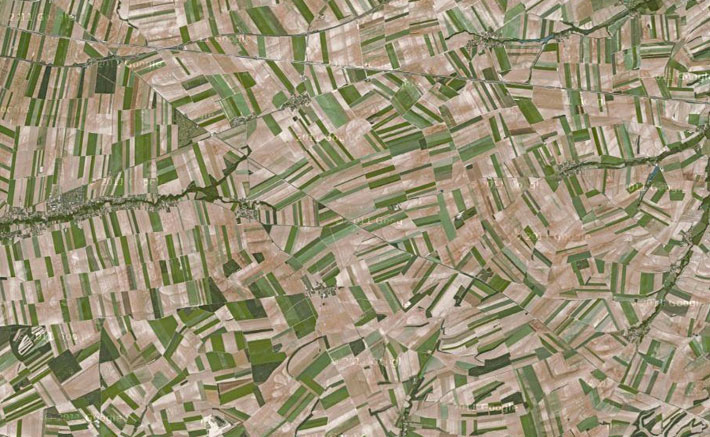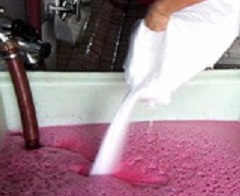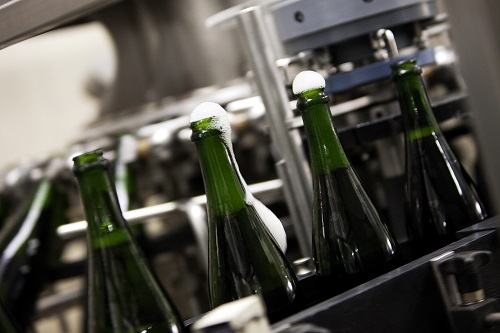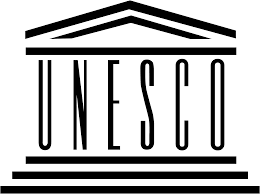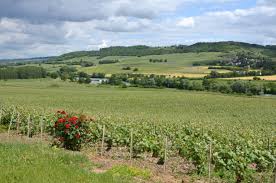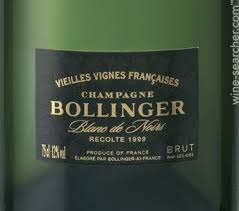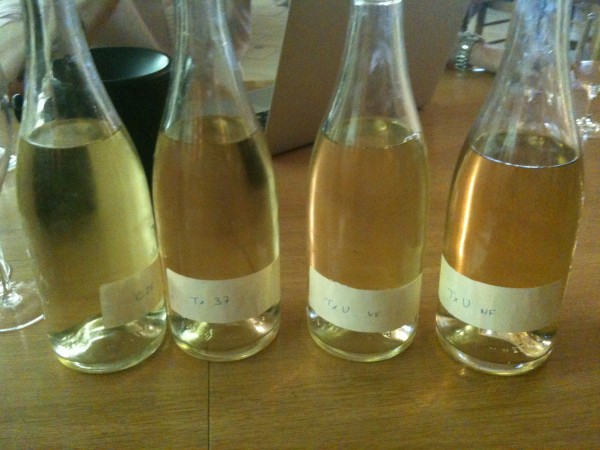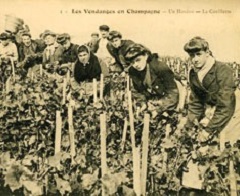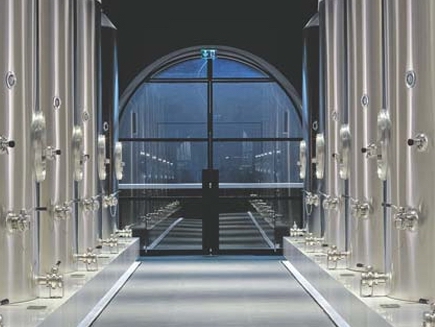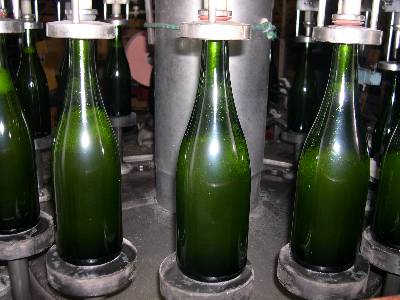Champagne Glossary
Welcome to A la française - Champagne Glossary
Before your Champagne tour, immerse yourself in the Champagne world with various names, villages, expressions, elaboration process steps...to be more familiar with the Champagne region.
For example, these are 10 most asked questions of our visitors :
- What are the other industries besides Champagne in the region ?
- How many Champagne producers are there ?
- When is the harvest in Champagne ?
- How many grapes do you cultivate ?
- How old are the vines in average ?
- How many people are working during the harvest and where do they come from ?
- How many people are living in the region ?
- How big is the Champagne vineyard ?
- Can you produce Champagne outside this region ?
- Who was Dom Pérignon ?
Find the answers reading this section, which is not exaustive !
We will discuss these various topics in more details during our Champagne wine tour !
Looking forward to guiding you in our beautiful region.
Book
Acidity
Ageing on lees
This is the period which follows the second fermentation. The bottle is stored horizontally in the cellar. In Champagne, the ageing on lees (vieillissement sur lies in French) period must last at least 12 months (rule of the Champagne organization CIVC), and there must be at least 15 months between bottling and shipping. For a vintage, 36 months of ageing are mandatory, but it can be more: a Billecart-Salmon vintage will age on lees during 8 years minimum.
Appellation (AOC)
True reference, the "controlled designation of origin" (in French AOC appellation d'origine controlée) Champagne was the first to be created in France, among the more than 500 existing AOC today. The Champagne appellation covers the definition of the type of the process, the protection of the Champagne trademark, as well as the delimitation of the production area. The Champagne appellation has particularly strict regulations on the vine, crops, alcoholic content, pressing ... With all these rules, Champagne is probably the most recognized and powerful appellation worldwide. It is run by the CIVC (Comité Interprofessionnel du Vin de Champagne).
Arbane, Petit Meslier, Pinot Blanc, Pinot Gris
Assemblage (Champagne blending)
The art of assemblage refers to a wine-making technique involving the blending of different wines from different plots, grape varieties and years. During the process, the wine-maker tries to determine which wine can compliment or reinforce an other. After multiple tastings of his mix, he stops when he believes to have come to the right balance between the sugar and the acidity of the wine and, indeed, when the aromas have reached their best possibilities.
Avize
Grand Cru village situated in the heart of La Côte des Blancs, Avize is famous for its Chardonnay. High quality Récoltants Manipulants (RM) like Selosse, Agrapart or Franck Bonville are based in the village. The Parc XIV offers a great view of the region, and the "Big Bottle which always flows" is a curiosity to see! Avize has also a great restaurant and hotel called Les Avises (it belongs to Champagne Jacques Selosse), a must do in Champagne !
Ay
Ay is a Champagne village with about 4000 inhabitants. Situated 4 kilometers from Epernay and 28 kilometers from Reims, Ay is one of the most prestigious Grand Cru villages with 429 hectares planted in Chardonnay and Pinot Noir. Ay belongs to the Natural Park of "La Montagne de Reims". Great Champagne houses like Bollinger, Ayala, Deutz, Henri Giraud, Collet have their bases in Ay. You will also find great quality small independent producers like Pierre Leboeuf, Hénin Delouvin, or René Geoffroy.
Barrel
The barrel is a container sometimes used in the preparation of Champagne. Champagne barrels are mostly looking for its faculty for micro-oxygenation of the wine during aging and not for the tannins and wood flavors, that's why Champagne winemakers are mostly gonna pick used barrels with already some years of age. In contrast to the stainless steel tank which does not allow exchange of air, the barrel allows the liquid to be in contact with the air which will give roundness to the wine.
Bidule
Once the Champagne has been bottled, wine makers use a « bidule » to hermetically seal the bottle. The bidule is a small receptacle connected to the temporary metal cap used during the second fermentation process. Its cavity enables the yeast to lodge inside and later, will facilitate the elimination of the sediments.
Biodynamic viticulture
Wine production method which goes beyond organic viticulture, banning all synthetic chemicals, but also applying to the soil and the vines specific preparations and following the lunar calendar in the whole work. Houses like Leclerc Briant in Epernay or Selosse in Avize are using this specific viticulture in Champagne.
Blanc de Blancs
A Blanc de Blancs is a Champagne made only with Chardonnay Grapes. (100% Chardonnay) It literally means white (white juice) from white (white grapes). Chardonnay represents 28% of the total planted area in Champagne which makes this grape variety the rarest of the three types in Champagne. (the two others are Pinot Meunier and Pinot Noir). Most of the Blanc de Blancs are in the south of Epernay, on the Côtes des blancs, which is the kingdom of Chardonnay. See blending. They become very popular as an apéritif thanks to their light and dry taste. They suit perfectly with seafood and soups.
Blending
True art in Champagne, this operation takes place after the first fermentation, when the wine is not sparkling yet ! The purpose of Champagne blending is about finding harmony between the various wines blended. A Champagne maker can blend grapes (Pinot Noir, Pinot Meunier, Chardonnay), villages (Grand Cru, Premier Cru, cru) and years (see non-vintage). For example : - A "non vintage" is a blend of various years - A vintage is a blend of only one year of harvest - A Blanc de Blancs is a blend made entirely of Chardonnay - A Blanc de Noirs is a blend of only black grapes (Pinot Noir and/or Pinot Meunier)
Bouzy Rouge
Bubbles
Thin or medium, grouped or scattered, they fascinate. All the beauty of champagne lies in its bubbles! They form when Champagne meets the bottom of the glass. Indeed, the glass has many cavities on its faces due : there are cellulose fibres because of the wiping and irregularities one the walls. Bubbles form in those micro-cavities: this is nucleation. When carbon dioxide bubbles are big enough, they break away, go up and let behind a micro-bubble in formation. The same process will be repeated. The bubble line is formed. According to a serious study, there would be 49 millions bubbles in a Champagne bottle! Sceptics can count again.
Capsule
The Champagne capsule is the metal cap that sits on top of a bottle of champagne. Its function is to protect the cork from the wire cage under the pressure of the Champagne bottle. The Champagne producers are also using a cap for ageing the Champagne. This cap will be removed during the disgorgement.
Chalk
The Champagne vineyard is well known for its chalky subsoil, which has its origins from millions of years ago. Champagne used to be a sea at this time and chalk is an accumulation of fossils from this area. It's a wonderful soil for the vine, because the porosity of the chalks works like a water reservoir in case of dry weather. Also chalk gives Champagne a very particular minerality that doesn't exist in any other sparkling wines. The effects of chalk on water can be compared with a sugar cube in coffee: the water goes up along the sugar cube, which made it possible for the soil to drain the water it needs
Champagne Avenue (Epernay)
Champagne Avenue is the most prestigious street in Epernay. Some well-known Champagne houses like Moët & Chandon, Bergère, Perrier Jouët, Pol Roger, De Venoge have their offices and cellars on the avenue. The constructions of these magnificent buildings began during the 19th century. The objective of the Champagne houses at this time was to build buildings dedicated for living, hosting clients as well as producing and stocking the Champagne. Often called "the most expensive avenue in the world", Avenue de Champagne has 110 km of cellar under its road and more than 200 million bottles and is visited by almost 500 000 people each year. Since July 2015, Avenue de Champagne has been classified in UNESCO world's heritage as one of the remarkable Champagne sites representative of Champagne production and sales.
Champagne Bottle
Unlike water bottles whose bottom is flat, those containing vine are usually bulging towards the inside at the bottom. Called "piqure" by the wine waiters, this hollow was thought for two reasons. First, to give the impression that a 75cL bottle has a bigger capacity. Indeed, if it had a flat bottom, the bottle would be less high. Second, the waiters use that hollow to serve the liquid inside, by putting their thumb in it. Champagne bottles have a deeper hollow. It is because of their "mises sur point" during the storage, as to say that the gob is placed downwards, the bottles piling up.
Champagne Economy
309 millions bottles are produced every year. 52% of the production is sold in France and 48% abroad. Among the biggest markets: the United Kingdom (23% of the export) and the United States (13% of the export). The major part of the export (87%) is done by the Champagne Houses like Moët & Chandon, Taittinger, Mumm and Lanson. The particularity of these producers is to buy grapes from growers in Champagne. This is more difficult for small producers to combine the production with a presence at an international scale. Even if some independent producers are more and more present on the market, they have neither the budget, nor the staff or marketing power of the Champagne Houses.
Champagne Vineyard
The Champagne Vineyard is made of three sub regions :
- The Montagne de Reims where Pinot Noir and Pinot Meunier are mainly grown.
- The Côte des Blancs where the Chardonnay is the only grape variety grown.
- The Vallée de la Marne (Marne Valley), where Pinot Meunier is predominant.
A La Française is working on exclusive partnerships with producers in these three subregions. Come and discover our Vineyard tours !
Chardonnay
Most prestigious grape variety in Champagne, it gives its best on the Côte des Blancs (White Coast) in the south of Epernay. Representing 28% of the Champagne vineyard, it gives delicate and elegant aromas to the Champagne. Citrus and floral notes are distinctive notes for the young Champagnes with chardonnay. Later, these Chardonnay based Champagnes will develop some toasted aromas. Chardonnay is also a grape variety that has a slow evolution as a wine which make Chardonnay based Champagnes ideal for ageing a long time in the cellar !
Chouilly
Chouilly is a famous village of the Côte des Blancs. Graded Grand Cru on "l'Echelle des Crus", Chouilly is a popular grape. The slopes of Chouilly, mainly oriented east, have an excellent exposure to the morning sun and are sheltered from westerly winds. This reduces the risk of spring frosts that can destroy the flower. Chardonnay, which has an early bud break, can therefore be grown overwhelmingly (99%), as throughout the Côte des Blancs.
Clarification
This operation consists in separating the sediments from the clear juices just after pressing, in order to get a pure juice. In fact, the grapes are not washed before pressing. That is why some impurities are still there in the juice. The growers can clarify either by a method called collage (adding an enzyme), centrifuge, filtering, or decantation by gravity. The most natural method would be the decantation by gravity. The producers would in that case let the wine sit in a tank for 24 hours in a tank waiting for the sediment to go down, and would at the end pump the top of the tank and wash the bottom containing the sediment. After the clarification, the winemaker can start the fermentations !
Clos
Clos is an old term from the 18th century and designates a vineyard surrounded with walls, which riders could not pass. Those walls may or may not be present today. These parcels belonged to aristocrats who could rent the land to the monks of the local abbey. Clos are prestigious sites with a special cuvée. The Champagne House Philipponnat was the first to limit its vineyard with walls: this is the Clos des Goisses in Mareuil-sur-Ay. Some Champagne Houses have followed the trend too: Bollinger : les Chaudes Terres, le Clos Saint-Jacques and la Croix Rouge (les Vieilles Vignes Françaises come from these three clos). Krug: le Clos du Mesnil. Billecart-Salmon : le Clos Saint-Hilaire in Mareuil-sur-Ay. Duval-Leroy : le Clos des Bouveries.
Collage
The collage is a clarification of the vine method aiming at eliminating the impurities. A kind of glue (colle) is added to the vine and will mix with the particles hanging, which will then go back to the surface and be eliminated. The collage is not always done by the producers, who can use other methods like filtrage (filtering) or soutirage (transfer).
Comité Champagne
THE Champagne Organization. Ruled by both houses and growers, the Comité Champagne sets all the rules in Champagne (Appellation AOC), from the culture of the vines to the labels of the bottles! For example : the Champagne organization is going to set how much the producers can harvest every year and the volume of juice they can press from the harvests. The Champagne organization has also the role to protect the trademark Champagne all over the world.
Coteaux Champenois
The “Coteaux Champenois” can be elaborated throughout the Champagne area, but they are still wines. Frequently, the name of the town from which the wine comes from is written on the label. One of the most famous being Bouzy, grand cru of Pinot Noir. A large majority of these wines are not vintages : they are born from an assemblage of different years. The “Coteaux Champenois” are rare wines because their production is less than 1% of the total wine production in Champagne. During shortages of grapes, the entire harvest is devoted to Champagne.
Court-noué
Court-noué is a very serious viral degenerative vine disease. It can sometimes lead to the early uprooting of the whole vine plot. The viruses responsible for Court-noué are the GFLV (grapevine fan leaf virus) and the ArMV (Arabic Mosaic Virus). Both are transmitted by the nématode xiphinema : microscopic worms that bite the vine root to feed themselves and transmit the disease if they are contaminated. One way to recognize a contaminated vine is by having a look at its leaves : they tend to get a yellowish color. Unfortunately, here in Champagne, Court-noué is a real scourge and no curative treatment has yet been found.
Cru
Cru in Champagne is the designation of a wine village. There are 319 villages in Champagne :
- 17 are Grand Cru: Côte des Blancs : Avize, Chouilly, Cramant, Mesnil-sur-Oger, Oger & Oiry Montagne de Reims : Ambonnay, Beaumont-sur-Vesle, Bouzy, Louvois, Mailly-Champagne, Puisieulx, Sillery, Tours-sur-Marne, Verzenay & Verzy Vallée de la Marne : Aÿ
- 44 are Premier cru
Crémant
This is the name given to the sparkling wines which are using the same fermentation technique (double alcoholic fermentation) as Champagne producers but in other wine regions. Famous Crémants in France : Alsace, Loire, Bourgogne. Champagne has its own specificities, and is considered as the best sparkling in the world, but some Cremant can be very good quality as well ! Some Champagne Houses plan to produce their own Crémant : in order to benefit from the popularity of sparkling wines in the UK, Taittinger planted Chardonnay, Pinot noir and Pinot meunier in the Kent region to sell its first bottles of "Crémant" from England by 2022. Be careful, do not mix Crémant and... Cramant !! Cramant is a Grand Cru Champagne Village where we like to bring our clients because of the high quality of the Chardonnay.
Cuvée
The word Cuvée has two designations in Champagne :
1.Type of champagne (blend) created by a producer.
Example :
- Dom Pérignon Cuvée of Moët & Chandon (cuvée prestige)
- Brut Rosé of Billecart Salmon (cuvée rosé)
- Carte Jaune of Veuve Cliquot (cuvée Brut Non Vintage)
The use of the name cuvée as well as the given name is completely arbitrary to the producer and does not guaranty a superior quality.
2. When it comes to pressing, the designation Cuvée is used to name the first juices extracted from the grapes. The cuvée is very strictly regulated in Champagne : it represents the first 2050 litres of grape juice from 4000 kg of grapes. The 500 next litres extracted are called the "taille". In total, one can only extract 2550 litres from 4000 kg, the rest can not be used as Champagne. This is a rule of the CIVC to ensure great quality for the Champagnes.
Disgorgement
After the second fermentation and the ageing of the Champagne in the cellar, it remains dead yeasts in the bottle called deposit. Disgorging is the process of extracting it. Nowadays, a -25 degree solution is used to freeze the neck of the bottle of champagne where the deposit was carefully conducted (see riddling). The capsule that was used during the ageing is then removed which will trigger the ejection of the frozen part of the neck, helped by the pressure inside the bottle . The bottle will be then closed with a cork and a wire cage, after an addition of liquor (see dosage).
Dom Pérignon
Dom Pérignon was born in 1639 and died in 1715. Called "father of the winemakers" or also "grandfather", he was a monk in the abbey of Hautvillers, near Epernay, in Champagne. "Cellerier" or winemaker of the place, he has done a lot for the improvement of the wine from Champagne, which was at this time not supposed to be sparkling. Sometimes though, his wines were a bit fizzy and the crown as well as the English market were fond of it. The monks weren't, because most of their bottles were exploding and they took time to figure out why. Some sugar and yeasts were left from the first fermentation and a second fermentation was naturally going on in the bottle. At the end of his life, Dom Pérignon did not really figure out the formula of making Champagne but he was closed to it. Thanks to his skills and discoveries, he brought the blending method in Champagne, the cellar storing, as well as new Belgium bottles and Spanish corks.
Dosage
The dosage in Champagne comes right after the disgorgement process. The idea is to balance the natural acidity of Champagne with some sugar (beetroot or cane sugar). The added quantity will determine also the type of Champagne :
- Brut : between 0 and 12 grams of sugar per liter
- Extra Brut : Between 0 and 6 grams of sugar per liter
- Brut Nature : Between 0 and 3 grams of sugar per liter
- Extra Dry : Between 12 and 17 grams of sugar per liter
- Sec : Between 17 and 32 grams of sugar per liter
- Demi Sec : Between 32 and 50 grams of sugar per liter
- Doux : More than 50 grams of sugar per liter
See also liqueur de dosage.
Débourbage
The aim of the débourbage is to put into fermentation vins clairs (clear wines) to obtain fruity and aromatically marked. It is a static decantation of the juice. During the first hours, a flocculation happens. The flocks formed sediment at the bottom of the vat with other particles suspended in the juice (piece of grape skin, seeds,...). After 12 to 24 hours, the clear juices are decanted.
Echelle des crus (scale of the crus)
The Echelle des crus classifies the 319 Champagne producers into 3 segments, according to the quality of the soil : Grand Cru, Premier Cru and Cru. The famous Grands Crus of the Champagne region are Bouzy, Avize, Le Mesnil or Ay. The cities like Reims or Epernay, hub of the region, are not part of the Grands or First Crus. Some villages out of the appellation contest this rating scale, considering that their soils' quality is equal to those of the Grands Crus villages.
Effervescence
It is the identity mark of the wines of Champagne but it is also a first expression of quality. This is neither a discovery nor an invention. Natural phenomenon, effervescence results from the action of yeasts, living organisms that transform the sugars present in the grapes into alcohol and carbon dioxide during fermentation. From the 17th century in Champagne, the observation of effervescence and understanding, led gradually to control.
Entreillage
It is a wall of bare bottles, it can contain ten thousand bottles all stacked on top of each and next to each other. It takes at least two persons to climb both ends at the same time. Otherwise, the pile crumbles. From the base, they hold and build the wall. To achieve perfect horizontality, it is necessary to have slats at the front or at the back of the bottles, every three or four rows.
Epernay
Champagne is both designating the famous and prestigious sparkling beverage, but is also the name of our region, more precisely : Champagne Ardenne region. Reims, as the biggest city, is the capital of this region (there are 13 regions now in France). However, Epernay is proud to be the capital of the beverage Champagne ! Actually, this fact seems logical when you look at the Champagne vineyard, Epernay is exactly in the center of it, and famous companies like Moët & Chandon, Perrier Jouet, Pol Roger...have their headquarters in Epernay for these reasons. If you visit the city, the must do is obviously the Champagne avenue which is said to be one of the richest streets in the world because of the underground cellar !
First fermentation
After having extracted the juice via the pressing, and having classified the "moûts" (must), the producer does a first fermentation, often in a stainless steel vat. This first fermentation can also be done in a "foudre" (cask) or in a "barrique" (barrel). The yeasts contained within the skin of the grape will eat the sugar of the fruit, which will provoke alcohol and carbonate gas creation. The vat being open, the gas escapes, and we get a "vin tranquille" (still wine) without bubbles at the end of this fermentation. This process lasts about 2 to 3 weeks.
Food and Champagne Pairings
Champagne can't be appreciated with everything, you need to be able to pair it with the right flavors ! In order to seize each and every savor of the bubbly, here's some food and Champagne pairing advice:
- First, you might want to know that Chardonnay brings finesse, freshness and elegance. Champagne composed mainly of White grapes and Blanc de Blancs tend to be at their best when matched with poultry, white meats, fishes or seafood. They will also be a good alternative for a pleasant aperitif.
- Pinot Noir is known to deliver more full bodied, powerful Champagnes.
- As for our local Pinot Meunier it will surely give more roundness and fruity fragrances. Champagnes made of a major amount of black grapes will be well combined with cheese or charcuterie. Here's a special tip : Matthias, head of the A La Française team loves to have Blanc de Noirs vintage with mature Comté cheese.
Grand Cru
Grand cru designates the greatest classification of the Champagne region. Only 17 of 319 villages benefit from the appellation. It may also designate Champagnes containing grapes exclusively from these villages. — List of the village classified «Grand Cru» — Côte des Blancs : Avize, Chouilly, Cramant, Mesnil-sur-Oger, Oger and Oiry Montagne de Reims : Ambonnay, Beaumont-sur-Vesle, Bouzy, Louvois, Mailly-Champagne, Puisieulx, Sillery, Tours-sur-Marne, Verzenay & Verzy Vallée de la Marne : Aÿ
Gyro-Palette
Gyro-palette is a machine used in the production of Champagne to turn the bottles after ageing on lees. A deposit of dead yeast was formed during the second fermentation and the goal is to extract it. For this, the gyro-palette replaces the riddling process (invented by Madame Veuve Clicquot) and moves by rotation the bottles to conduct the dead yeasts to the neck. This process lasts less than a week. This is the final step before the extraction of the deposit, called the disgorgement.
Harvest
Called "vendanges" in French, this is traditionally done around the middle of September in Champagne. 150 000 workers will be involved in the process. Every bunch is handly picked (it is the rule in Champagne) and quickly brought to the press to avoid the coloration of the juice by the pigments of the skin, and oxidation. Pinot Noir, Pinot Meunier and Chardonnay are the three grape varieties in Champagne.
Hautvillers
Hautvillers is a village in the Champagne region. Famous thanks to the monk Dom Pérignon, who used to live there, Hautvillers is one of the most visited villages in Champagne. Situated on the south of the Montagne de Reims on a hill, it overhangs the town of Epernay. Everything started in 650, when Reims' archbishop Rivard gave the order to build a new abbey in the area. Later, villagers from the village Villare moved close to the abbey and named the place Alta Villare (high village in latin) which would later become Hautvillers. Dom Pérignon lived in Hautvillers between 1668 and 1715 and was a monk of the abbey. The legend that he invented Champagne is not entirely true but he is considered as the father of the Champagne's producers for many reasons : -he improved the technics of "fractionnement", to create a white wine from black grapes -he worked on new blending method -he participated in the creation of new deep cellars, to create a great environment for the wines, with a constant temperature -he invented new bottles (more resistant to the pressure) and found better quality corks for the bottling. Hautvillers is now a great premier cru Champagne village with beautiful houses, vineyards and viewpoints. To visit absolutely !!
La Champenoise
La Champenoise is a newly born Champagne event lasting 2 days and taking place in Reims' covered market : Le Boulingrin. The event aims at promoting the idea that qualitative Champagne is affordable by all. During La Champenoise, up to 60 small producers and grower Champagnes come together and enable the guests to discover their finest "cuvées". Champagne is sold by the glass at quite low prices. Bottles are sold as well, at producer price.
Label
Champagne labels follow a strict reglementation set up by the CICV. Among the mandatory mentions, here are the information which have to be on the label : - Appellation Champagne - Percentage of alcohol - The registration and code number of the producer given by the CIVC - Batch code - Warning for pregnant women The name and logo of the producer is usually indicated on the neck of the bottle.
Les Crayères
Les Crayères Secret and Mysteries, Les Crayères are an emblematic place in the city of Reims. Their creation goes back to the to Gallo-Roman era, where the chalk blocks were extracted to build the city of Durocortorum (Reims). Thoses limestone cavities were discovered in the 18th and 19th centuries by the first wine merchants, in a time where the wine storage was problematic. Les Crayères are the perfect place : constant temperature between 48° and 52°F; 90% of humidity; insulted from the external vibrations. Several cellars have been dug by the big Champagne Houses, going from 20 to 40 meters. Moreover, thousands of small individual cellars owned by Champagne growers or private individuals are built. Even though there are 250 kilometers of galleries underground, only a small part of them can be visited; all details of the offers are available at the Tourist Office of Reims or Epernay. The most remarkable are the cellars of Ruinart and Pommery. At the request of Louise Pommery, the local sculptor Gustave Navlet made three sculptures in the chalk. In 1906 she completed the Domaine de Pommery with le Château des Crayères, which became a famous and distinguished hotel-restaurant in Reims.
Liqueur de dosage
Also called "liqueur d'expédition", this is a blend of wine and sugar (beetroot or cane sugar) that the producer will add just after the disgorgement of the bottle to balance with the natural acidity of the champagne wine. The added quantity will determine also the type of Champagne :
- Brut Nature or brut zéro : Between 0 and 3 grams of sugar per liter
- Extra Brut : Between 0 and 6 grams of sugar per liter
- Brut : between 0 and 12 grams of sugar per liter
- Extra Sec : Between 12 and 17 grams of sugar per liter
- Sec : Between 17 and 32 grams of sugar per liter
- Demi Sec : Between 32 and 50 grams of sugar per liter
- Doux : More than 50 grams of sugar per liter
Mailly Champagne
Mailly-Champagne is situated on the northern slopes of the Montagne de Reims, 13 km South of Reims and North of Epernay. Mailly-Champagne is a Grand Cru Village. Quality producers like Ernest Remy or Cooperative Mailly Grand Cru are situated in Mailly-Champagne. You can visit Mailly-Champagne and its producers with A La Française !
Malolactic fermentation
This is a fermentation that is not systematically performed by the producer. Houses like Lanson and Gosset usually don't make it. The process converts malic acid into lactic acid. It takes place at the end of the alcoholic fermentation and is made through an addition of bacteria and a controlled temperature of the vats or barrels. The wine's aromas evolve through this fermentation. Malic acid is the one that you would find in a green apple, lactic acid would be more like a ripe apple!
Mareuil-sur-Ay
Mareuil-sur-Ay is a Premier Cru village located on the Reims Mountain. A La Française's offices are located in Mareuil-sur-Ay, in Philipponnat's former Champagne House. The place has been transformed into a guesthouse and now holds A La Française's traditional Tasting cellar : home of our masterclass. The prestigious Billecart Salmon has its head office and production center in Mareuil-sur-Ay as well as the small size producer Champagne Bénard. The remarkable statue of "Notre Dame du Gruguet" overhangs the village symbolizing Holy Marie's protection over the population during World War II.
Millésime (vintage)
Name given to champagnes containing grapes from a single year of harvest. This year will be then written on the label of the Champagne bottle. To be called millésime (vintage in English) the Champagne must age at least 36 months in the cellar before disgorgement. (The rules in Champagne are set by the CIVC.) In the 90's, the years 1990 and 1996 were amazing ! And in the 2000's years, 2002 and 2008 were probably the best.
Montagne de Reims (Reims mountain)
The "Montagne de Reims" is situated in the Marne district in France, between Reims and Epernay. The regional park of La Montagne de Reims is situated there. It is a famous area in Champagne, especially thanks to its chalky subsoil, which is ideal for vine growing. Pinot Noir is the main grape variety planted on the hills. The Montagne de Reims is also known for its "Faux de Verzy", a very special variety of trees with original forms that you won't find anywhere else.
Nabuchodonosor
No one really knows about the origin of the biblical names of the Champagne bottles. However in the 19th century, Champagne growers decided to give Champagne bottles antique names in order to associate Champagne wine with the exuberance and magnificence of the older civilisations. Thus, the Nabuchodonosor bottle (15L, 20 bottles) is named after Nabuchodonosor II, king of Babylon between 605 and 562 before Christ. Considered as the biggest king of the city's areas, he lies at the roots of the Hanging Gardens, one of the Seven Wonders of the World. He made Babylon one of the most powerful cities of the period in economical, cultural and religious area. He appears in the Old Testament in a negative way, because of the sieges of Jerusalem and the many deportations of Jewes in Babylon. However, he is also considered as a tool of God, who exercised his will by extending his empire.
Négociant manipulant (NM)
Also called "Champagne house" a Negociant Manipulant is a person or a company, owning a vineyard or not, who buys grapes from Champagne producers for the production and the sales of Champagne bottles. The two letters NM are visible on the labels of theses Champagne bottles. Examples of négociants manipulants (NM) : Moët & Chandon, Pommery, Lanson, Mumm, Heidsieck, Ruinart, Veuve Clicquot, Taittinger, Krug, Bruno Paillard, Vranken, Thiénot, Perrier Jouët...
Packaging
It is the last step before the bottles’ commercialization. During this process, they receive:
- a foil capsule (coiffe) in laminated aluminium which covers the cork
- a neck band label (collerette) which is fitted at the base of the foil
- a label, placed on the front of the bottle and sometimes at the back too
Phylloxera
Arriving for the first time in Champagne in 1890, this vine louse devastated 70% of the vineyards. Only 3 plots of Pinot Noir owned by Bollinger survived. The 3000 bottles resulting from these plots, called "Vieilles Vignes Françaises" (Old French Vines) became famous in Champagne. To resolve this problem, American rootstocks were grafted onto phylloxera infected vines. These rootstocks are resistant to Phylloxera thanks to their thickness. A few producers still have small plots of ungrafted vines, but this is extremely rare.
Pinot Meunier
Pinot Meunier is one the three grape varieties used in Champagne. It's a particular type because it is quite rare in other wine regions. Cousin of the Pinot Noir, it is mainly used in the Marne Valley region. It represents about 33% of the planted area in Champagne. It gives Champagne wine fruit aromas and roundness. As a wine, it ages quicker than Chardonnay and Pinot Noir.
Pinot Noir
Pinot Noir is a famous variety in Champagne and Burgundy. In Champagne, it gives its best on the Montagne de Reims. Pinot Noir is one of the three most used grape varieties in Champagne. It is a black grape giving white juice, which is a specificity of the Champagne region. In other regions like Burgundy or New Zealand, the Pinot Noir winemakers will be looking for a red juice colored by the skin of the grapes. It represents about 38% of the Champagne area. It is known for bringing power and fruit to the Champagne wines, while also giving some subtil red fruit aromas.
Premier Cru
Premier cru is the second best classification after Grand Cru in the Champagne region. 44 of 319 villages receive this designation. It may also mean Champagnes containing grapes exclusively from these villages.
List of the village classified «Premier cru»
- Côte des blancs : Bergères-les-Vertus, Cuis, Etréchy, Grauves, Vertus, Villeneuve-Renneville-Chevigny, Voipreux
- Montage de Reims : Bezannes, Billy le Grand, Chamery, Chigny les Roses, Coligny, Ecueil, Cormontreuil, Coulommes la Montagne, Jouy les Reims, Les Mesneux, Ludes, Montbré, Pargny les Reims, Rilly la Montagne, Sacy, Sermiers, Taissy, Tauxières Mutry, Trépail, Trois Puits, Vaudemanges, Villedommange,Villers Allerand, Villers aux Noeuds, Villers Marmery, Vrigny
- Vallée de la Marne : Avenay Val d’or, Bisseuil, Champillon, Cumières, Dizy, Hautvillers, Mareuil sur Aÿ, Mutigny, Pierry, Tours sur Marne
Pressing
Pressoir
The pressoir in Champagne designates the machine that presses the grapes to extract the juice. A pressoir can contain from 2000 kilos to 16 000 kilos of grapes depending on the size of the producers. Grapes are brought into boxes inside the press room and are pressed separately depending on their variety (Pinot Noir, Pinot Meunier, Chardonnay) and their provenance.
Pressure (Champagne bottle)
A champagne bottle contains between 4 and 6 atmospheres ! It's 2 to 3 times more than a car tire ! This pressure is brought by the second alcoholic fermentation which happens inside the bottle during about 1 month. Yeasts and sugar are added to the Champagne wine before bottling and the bottle is closed by a metallic cap and put inside a cellar. During this one month yeast is gonna eat the sugar inside the bottle and consume the air. Like human beings they will expel CO2 which is captured inside the bottle. This is the formation of the bubbles and the bottle pressure.
Rebêche
The rebêche is the last press of the Champagne press, after the "cuvée" and the "taille". It can not be used in the Champagne elaboration process since it is more bitter and lower quality. Indeed, when one presses grapes, after a while the skin and the seed are reached and the juice is not as pure as the first press. The rebêche will be sent for distillation to make "Marc" "Fine" or "Ratafia" of Champagne, which are local spirits.
Reims
Reims is the main city in Champagne with 185 000 inhabitants. Situated on the north of the Champagne vineyard, many prestigious Champagne houses have their cellars located in Reims such as Veuve Clicquot, Taittinger, Charles de Cazanove, Pommery, Ruinart, Vranken, Charles Heidsieck or Lanson. 90% of the city was destroyed during the first World War, but you can still find some amazing monuments in the city like Reims cathedral or Palais du Tau, as well as the roman mines used by Champagne houses like Taittinger for their cellars. Reims has two train stations, one in the city centre and one outside the town. You can easily travel from Paris to Reims with the TGV (fast train) in about 40 minutes. Don't hesitate to pay us a visit, we will pick you up at the train station for a great Champagne excursion !
Reims Cathedral
Reims cathedral Notre Dame de Reims is a roman catholic church situated in Reims in the Champagne region. Its construction started at the beginning of the 13th century and was finished during the 14th century. A majority of the French kings like Louis the 14th were crowned in Reims inside the church. This cathedral is one of the major and most impressive constructions of gothic art in France with a wonderful architecture and 2303 statues. It has been listed as UNESCO world's heritage since 1991. With 1 500 000 people visiting it each year, Reims cathedral is one of the must do in Champagne tourism.
Reserve Wines
These are wines made with the harvest of the previous years. They are used in the blending process to regulate and perpetuate the style of a Champagne House from one year to another. To avoid their oxidation, they are kept in stainless steel vats at low temperature (except Bollinger which keeps them in Magnum). The final blend must convey the quality and the complexity of a wine and this is the task of the winemaker to decide whether a reserve wine is needed or not. Of course, a vintage wine can not be made of reserve wines.
Riddling
Traduction in French : remuage. When the Champagne bottle has ended its ageing process, it is time to make the dead yeast (sediment) slide along the bottle and reach its neck to prepare for disgorgement. The bottle is slowly rotated from a horizontal position to a vertical position, with 25 turns by bottle on average. The process lasts 4 weeks when it's done manually. The riddling process has been developed mostly by Madame Veuve Clicquot, who made the invention of the pupitre (riddling tables). Before that, Champagne makers were bringing sand inside their cellars to turn the bottles. Nowadays, most of the producers use the Gyro-palette which is a machine that can handle 480 bottles at a time and make the process last less than a week instead of 1 month with the pupitre.
Rosé Champagne
The Rosé Champagne is a type of wine of Champagne which color is pink. There are two methods to make rosé :
- The method by maceration : you put the grape skin and the wine together and wait until it is rosé (pink).
- The method by blending : white wine and red wine (10%) are blended together to get the rosé color.
Rosé de Saignée
The Rosé de Saignée method, unlike the pressed rosé which is elaborated like a white wine, consists in letting the clear juice macerate in contact with the grape's skin so that they color the wine in the pink shade wanted. The natural pigments within the skin of the dark grapes will color the juices and enrich their aromatic components. After maceration, the vat is "saigné", which means that its content is emptied in order to separate the must and the skins. The Champagne Rosé is more vinous and stronger than the blended rosé, which usually shows a more intense pink color.
Récoltant Manipulant (RM)
Recoltant Manipulant (RM) is a Champagne grower who produces and sells Champagne from his own vineyards, and don't buy grapes from other producers, unlike Négociants Manipulants (NM). The two letters RM are visible on the labels of the bottles produced. A La Française's specialty is to find the best RM to bring you on tours to their production centers.
Second fermentation
The second (alcoholic) fermentation is very specific to Champagne. It is provoked by an addition of yeast and sugar inside the bottle during bottling(tirage). After this process, the bottle is closed by a cap (capsule), and put in the cellar. During approximately one month, the yeast are gonna eat the sugar, creating alcohol (the wine goes from 11 to 12,5 degrees of alcohol) and CO2 which can not escape from the closed bottle in contrast to the first fermentation. This is the birth of the Champagne bubbles ! Second fermentation is also called Prise de Mousse or Champagnisation.
Size of Champagne Bottles
There are different sizes of Champagne bottles. The most commons are:
- Quarter of Bottle (20cL)
- Half Bottle (37,5cL)
- Bottle (75cL)
- Magnum (1,5L = 2 bottles)
- Jeroboam (3L = 4 bottles).
Bigger bottles are less common and produced for big occasions:
- Rehoboam (4,5L = 6 bottles)
- Mathuzalem (6L = 8 bottles)
- Salmanazar (9L = 12 bottles)
- Balthazar (12L = 16 bottles)
- Nabuchodonosor (15L = 20 bottles)
The Chaptalisation
This process consists in enriching the fermenting must with sugars in order to rise their alcohol potential. It was invented by the french chemist Chaptal. Usually, this process is used during the hard years, when the grape's maturity is not reached. Hence, the added sugar will turn into alcohol just like natural sugar within the grape would have.
Tirage
Tirage designates the process of bottling. Wine is taken from the stainless steel tanks or the barrels after the first alcoholic fermentation and the malolactic fermentation. The future Champagne can not be bottled before the 1st of January following the harvest. Like during the first fermentation, sugar and yeasts are added with the wine bottled and closed by a cap, to create what is called the "prise de mousse" (foam). Yeasts are gonna eat the sugar, create some more alcohol, and produce carbon dioxide, which is trapped inside the bottle. This is the second alcoholic fermentation.
UNESCO
The United Nations Educational, Scientific and Cultural Organization (UNESCO) was created in 1945 just after the second world war. The headquarters are situated in Paris. One of the association's objectives is to preserve the world's heritage and a list of the UNESCO world's heritage sites was created in 1972. This label is now recognized worldwide. Since July 2015, the region Champagne has been part of it with its vineyards, vinification process, and scenic spots like Hautvillers. Reims cathedral was listed in 1991.
Vallée de la Marne (Marne valley)
As indicated by its name, the Vallée de la Marne is the valley of the river La Marne. Vallée de la Marne also designs the subregions vineyard which follows the river. Pinot meunier is the dominant grape variety on this vineyard, thanks to a great adaptation to the limestone soils and spring frosts. Come and discover A La Française's selected producers on the Vallée de la Marne !
Vieilles Vignes Françaises
Les Vieilles Vignes Françaises ("Old French Vines") are a very small production from the vineyards which resisted phylloxera in 1890. The plots belonged to Bollinger and were classified as Grands Crus: Chaudes Terres and Clos St Jacques in Aÿ and Croix Rouge in Bouzy. Those bottles are extremely rare and thus expensive.
Vin Clair
A vin clair - can be translated into " clear wine"- is a wine that has already gone through the alcoholic fermentation process. The vin clair is a still wine that will soon be blended with other wines before being bottled. Once bottled, yeast and sugar will be added and the second fermentation will allow gas to accumulate and bubbles to emerge. A La Française has the ability to organise Vins Clairs tastings for you.
Yeasts
Used during the first and the second fermentation, yeasts are micro-organisms which convert the sugar into alcohol in a process called "alcoholic fermentation". Yeasts also produce carbon dioxide. As a result, there is a lot of gas escaping from the tanks (or barrels) during the first alcoholic fermentation. The winemakers will get rid of the dead sediments using filtration after the fermentation. During the second alcoholic fermentation, the pressure inside the bottle goes up as it is closed by a temporary cap. When yeasts have no sugar to consume anymore, they die and thus create a deposit in the bottle. Riddling and disgorging will permit us to get rid of this deposit. Indigen yeasts from the grapes can be used for a natural first fermentation but a lot of winemakers like to use their own yeasts for more control. During the second fermentation in the bottles, external yeast will systematically be used.
